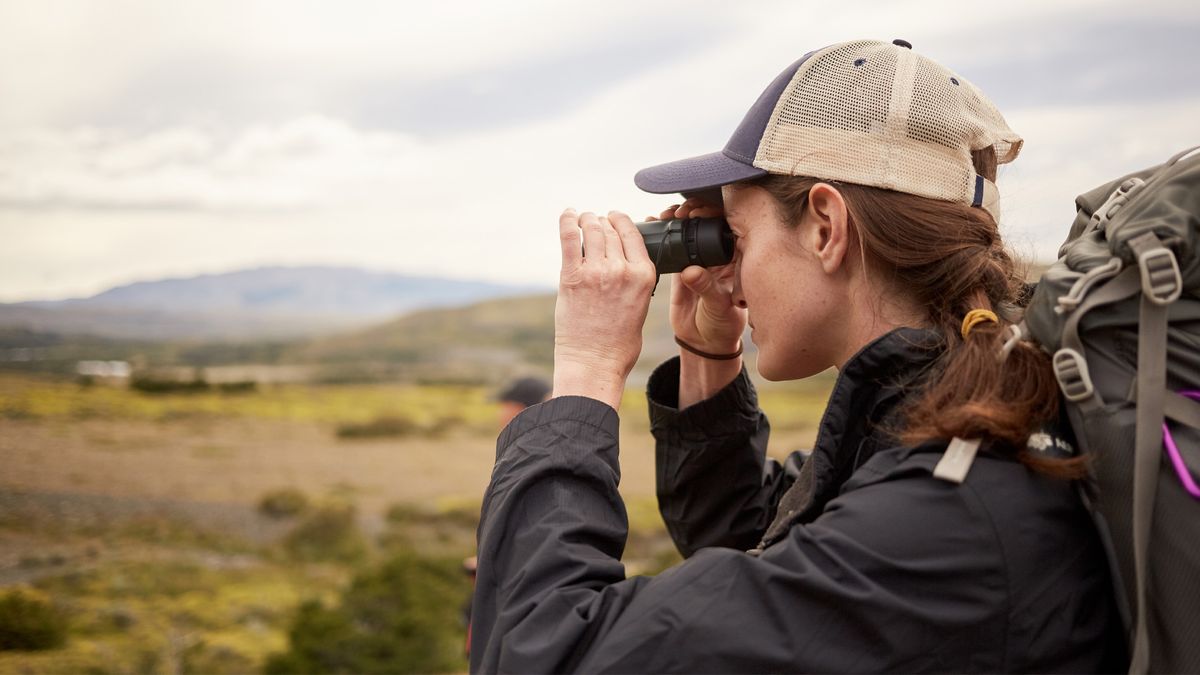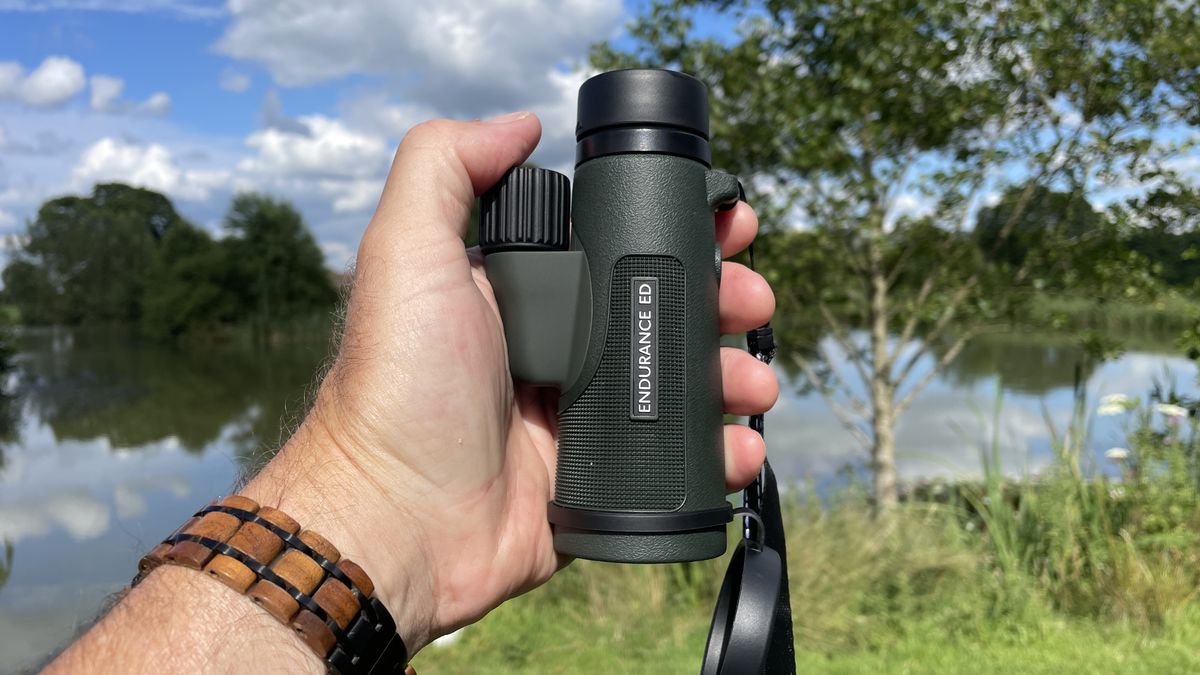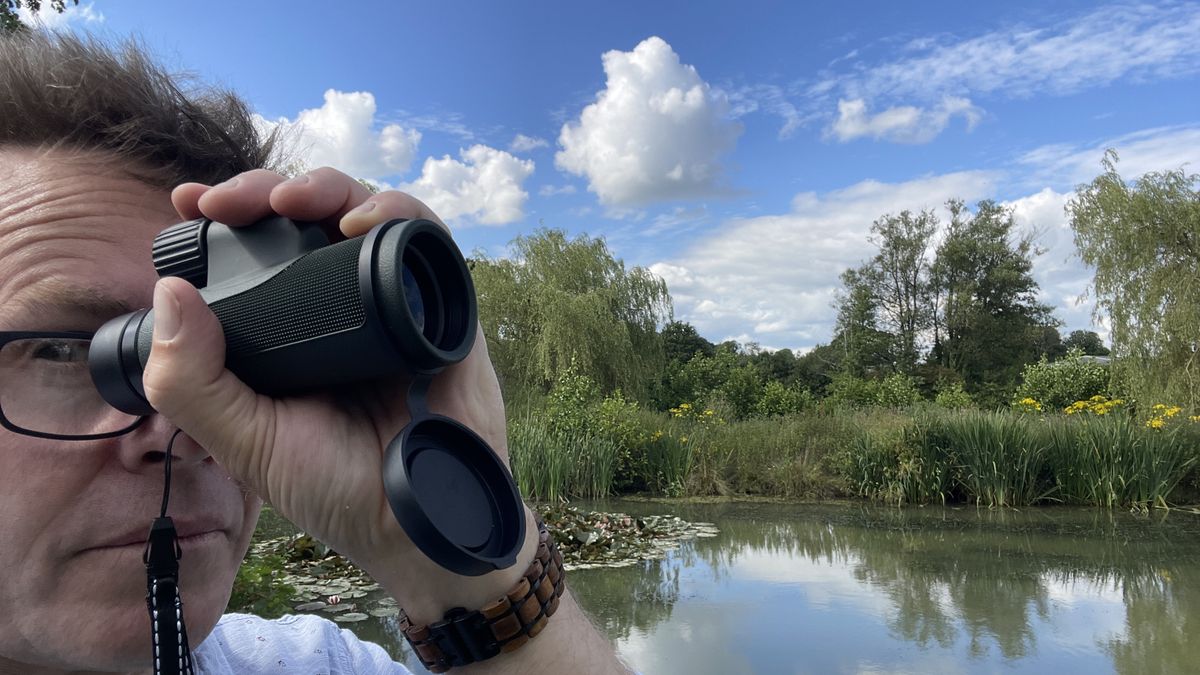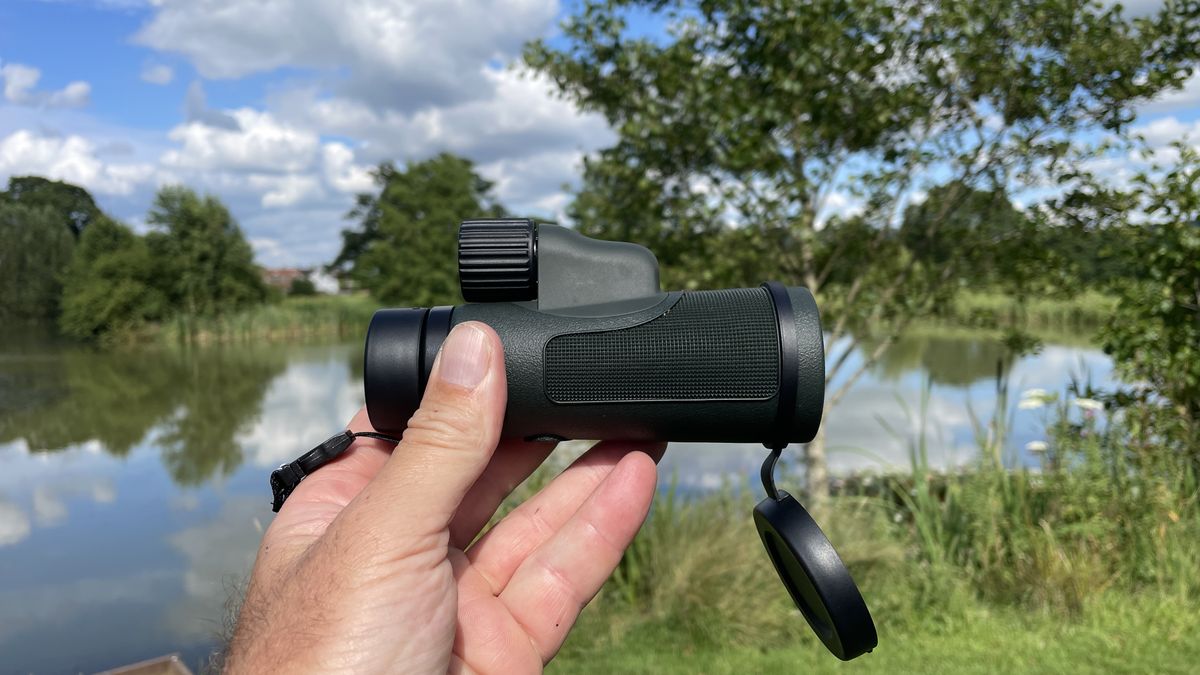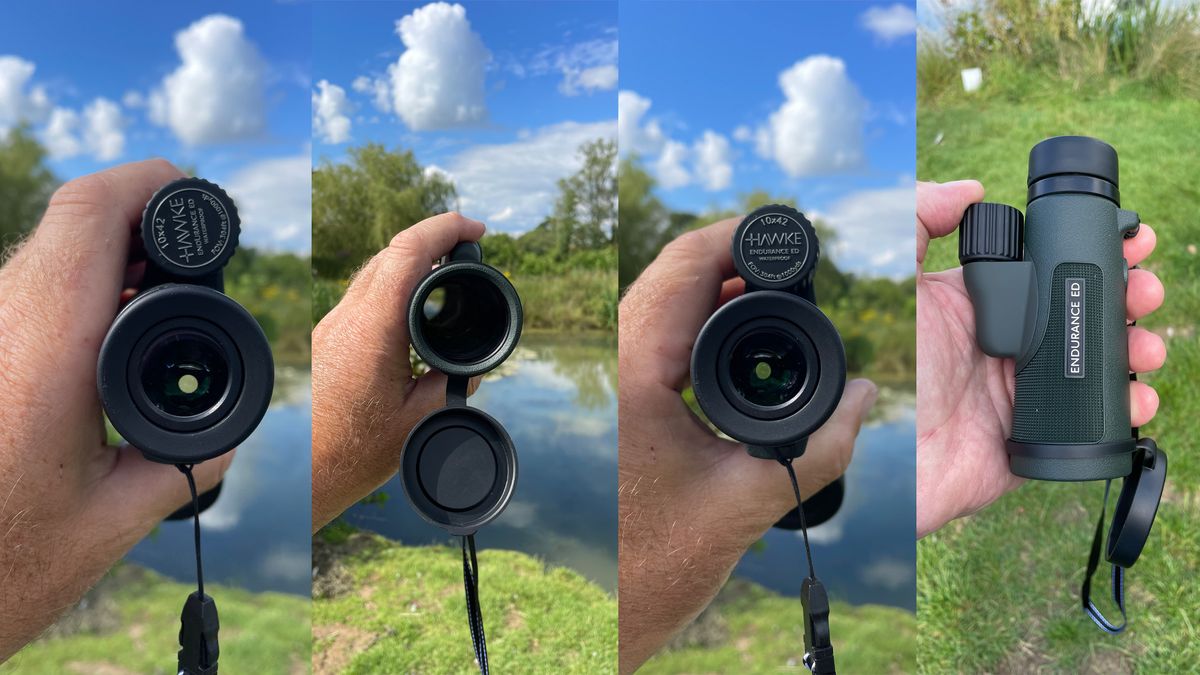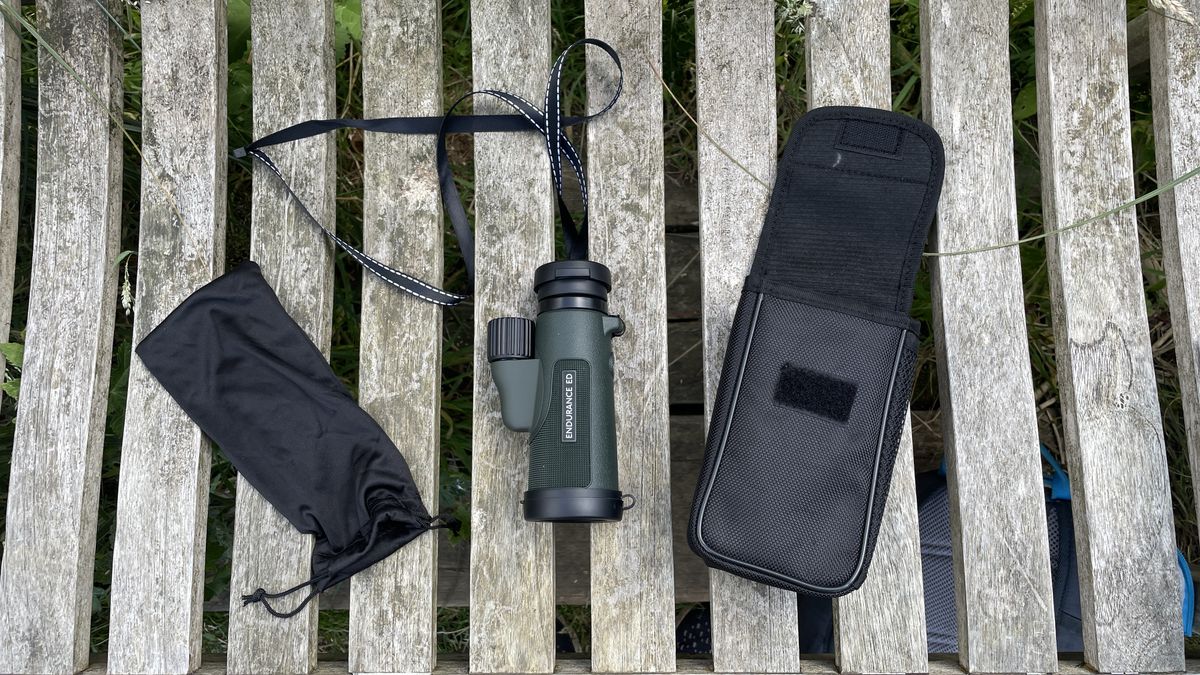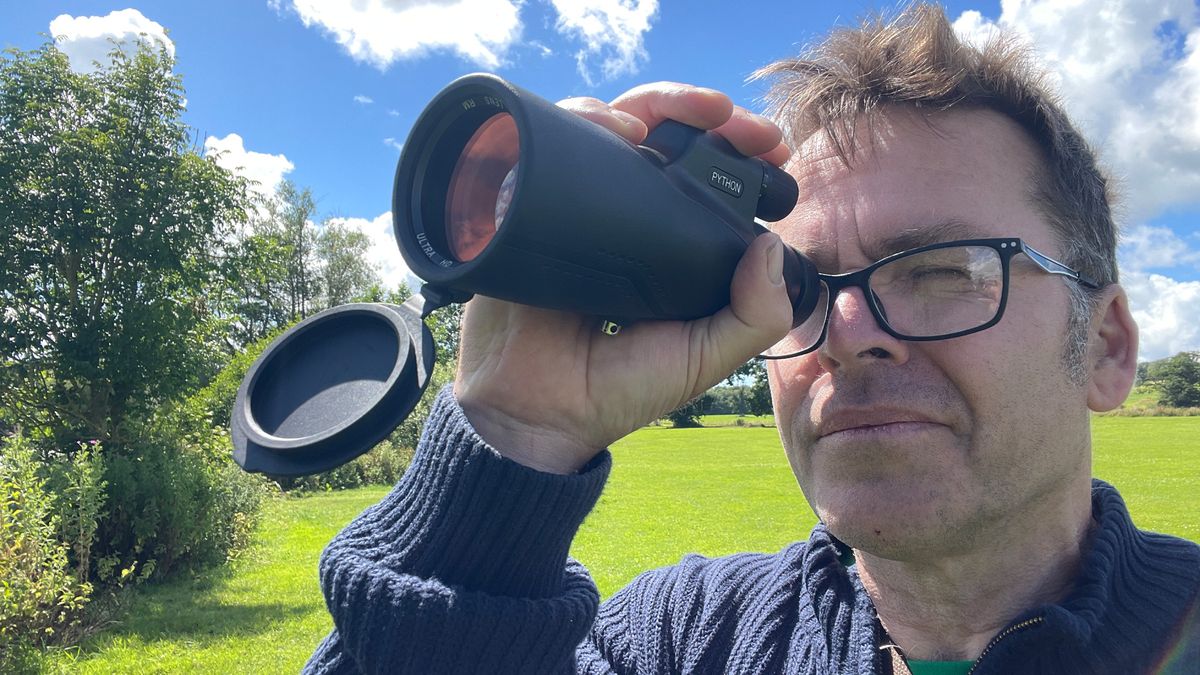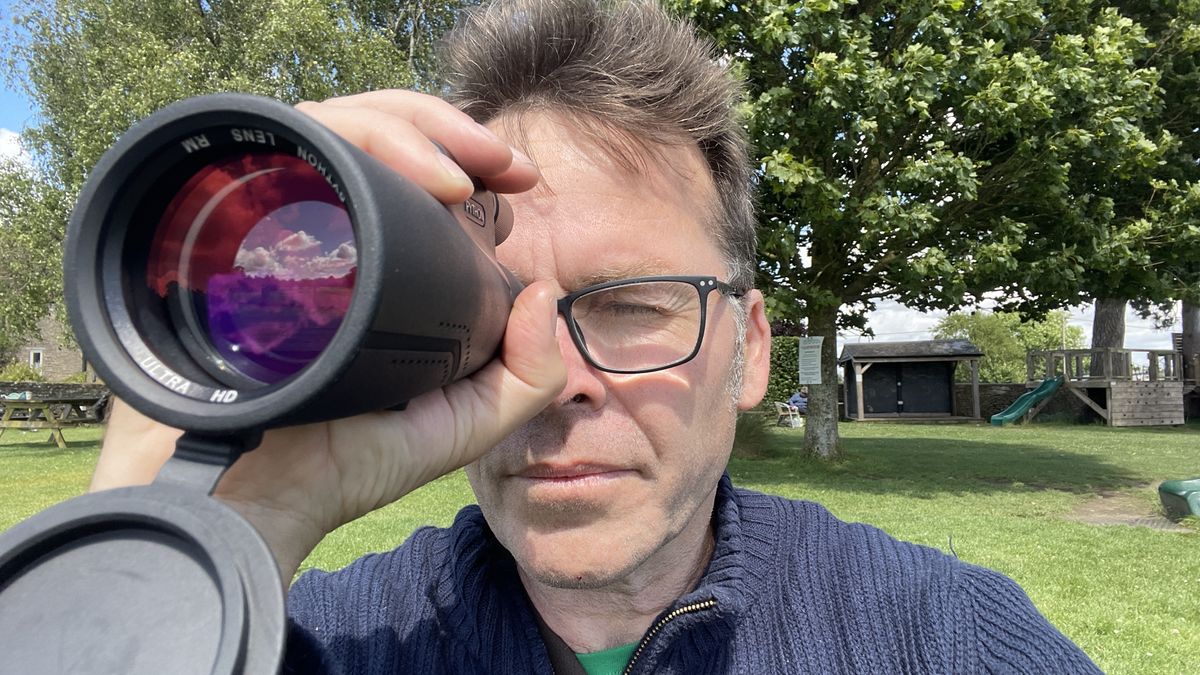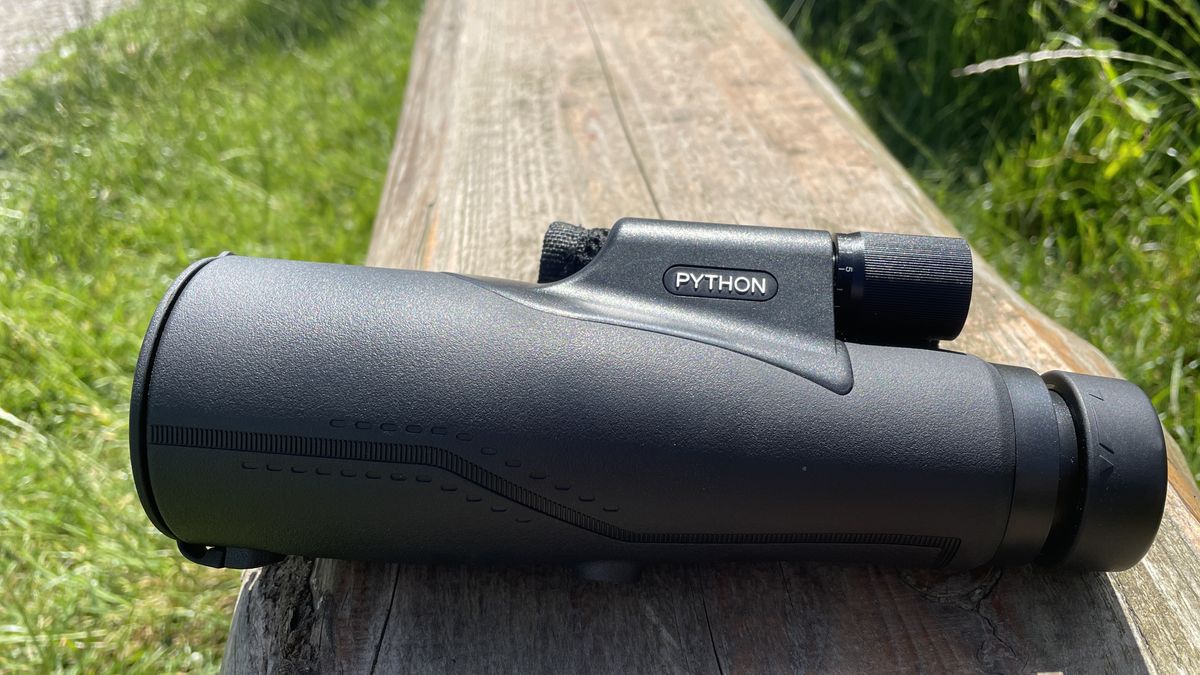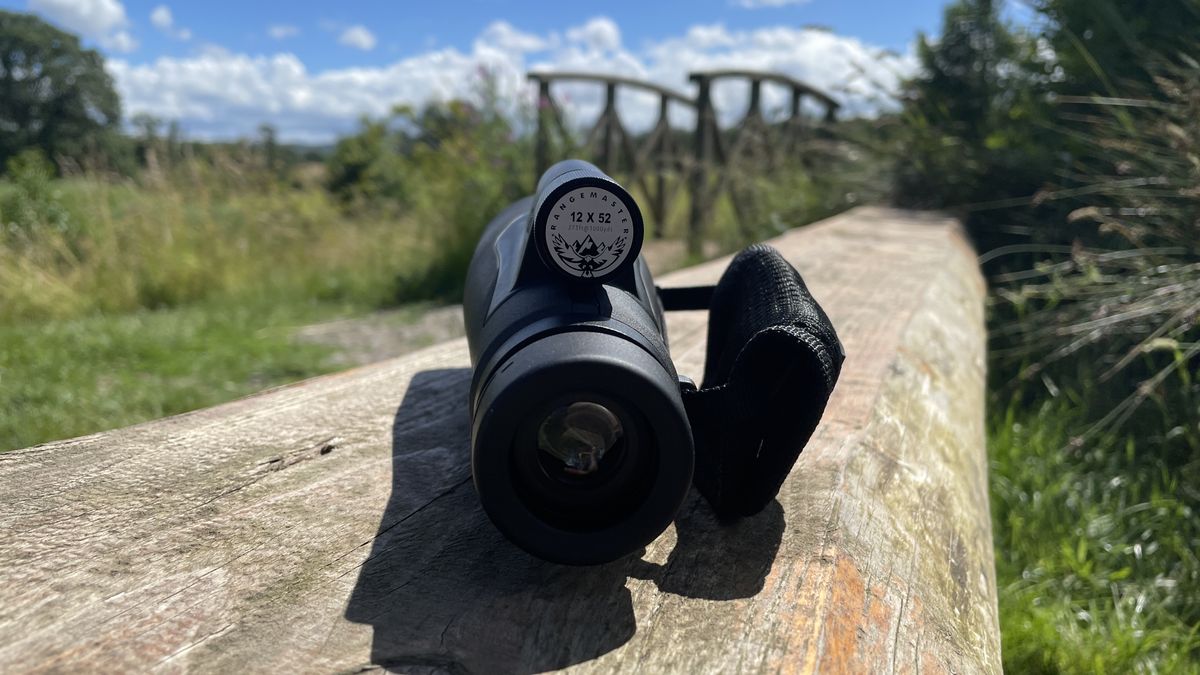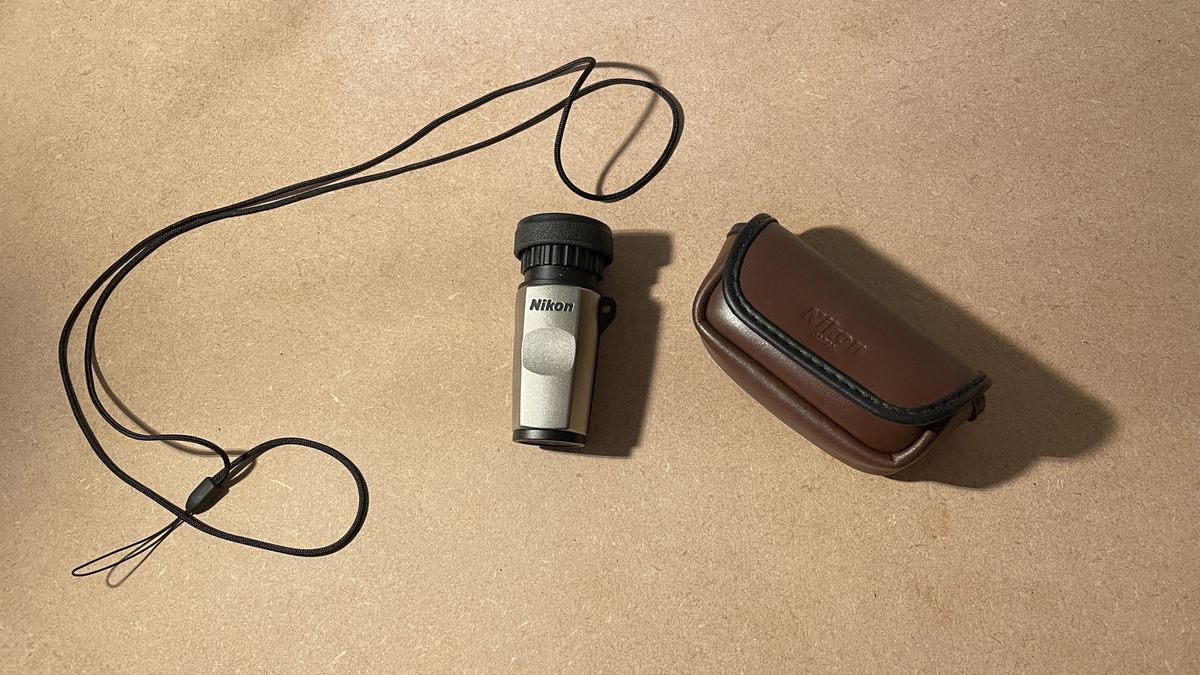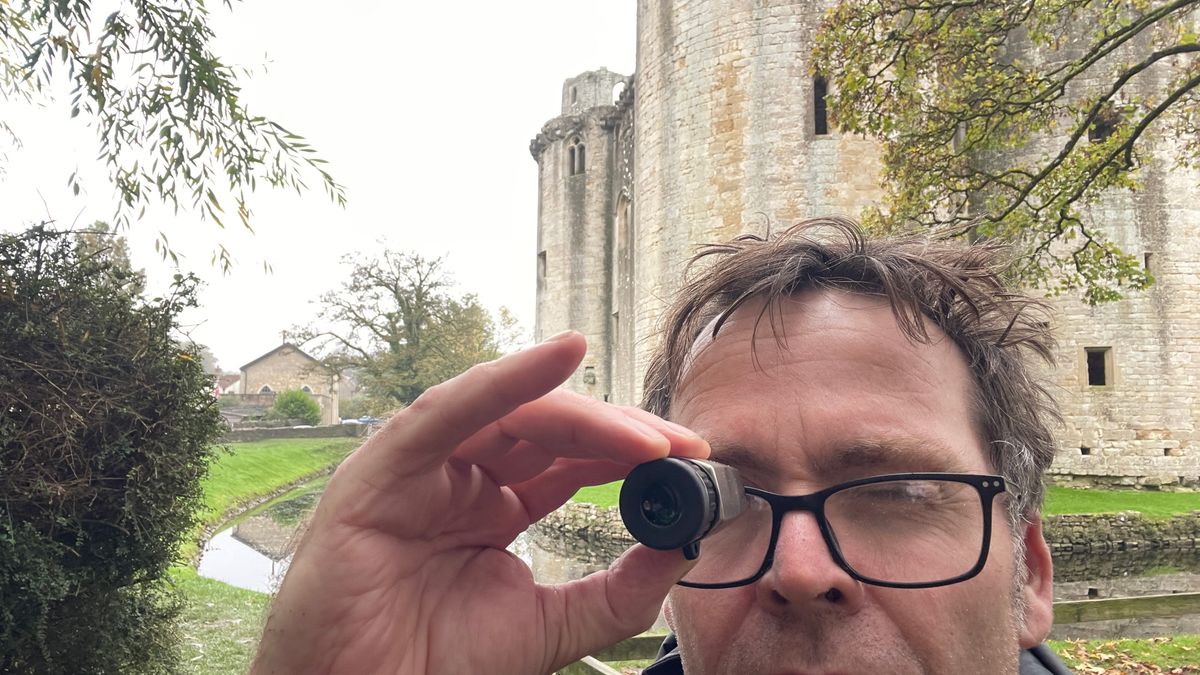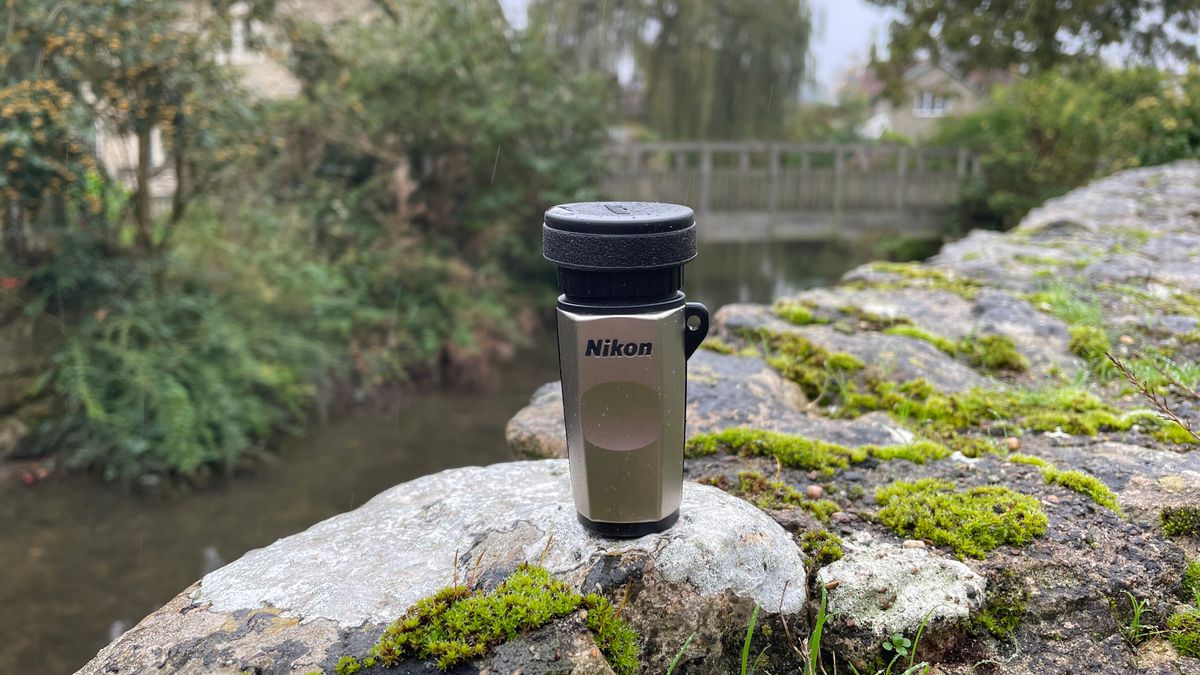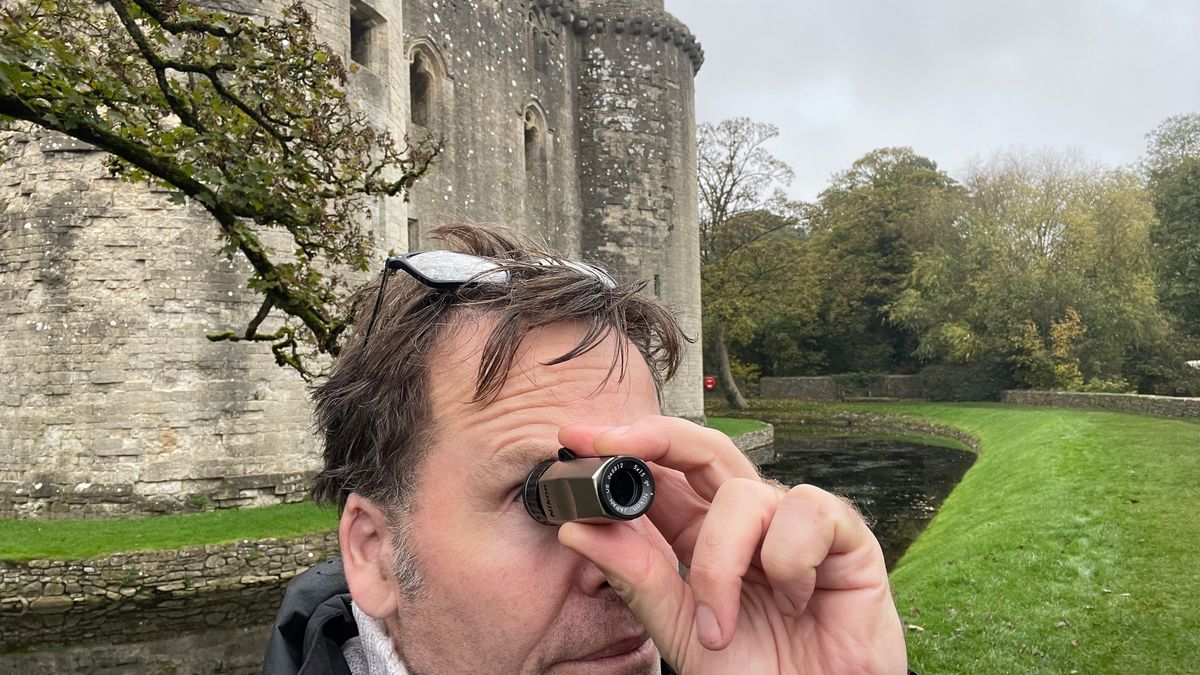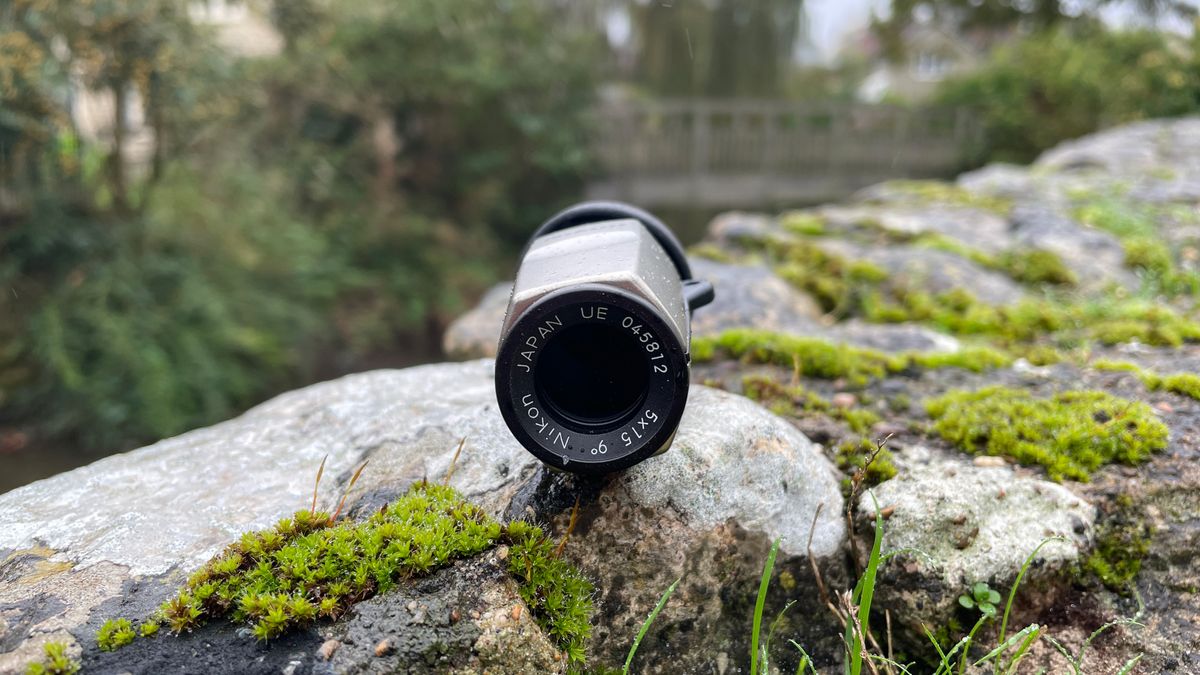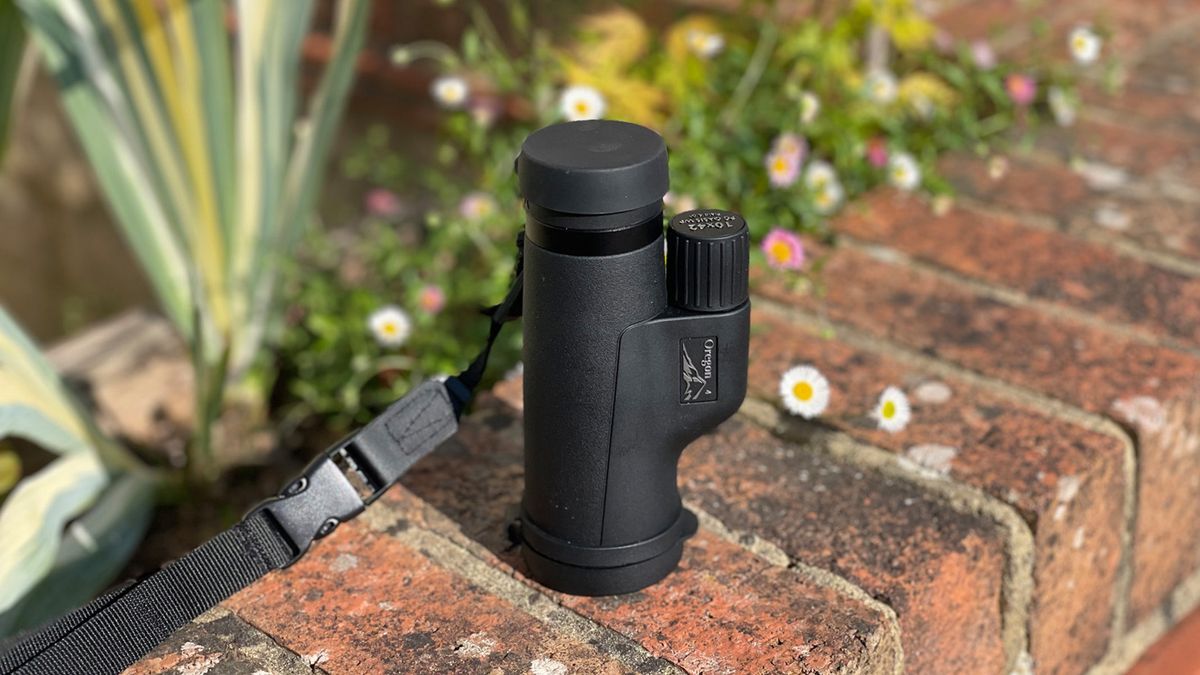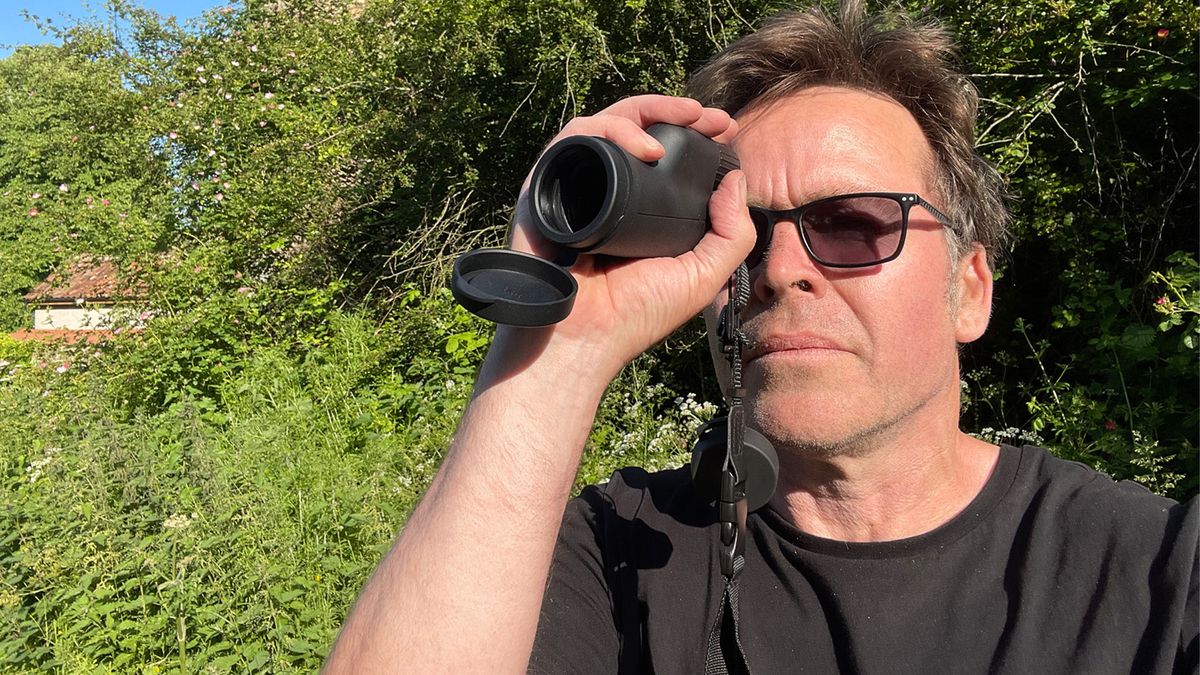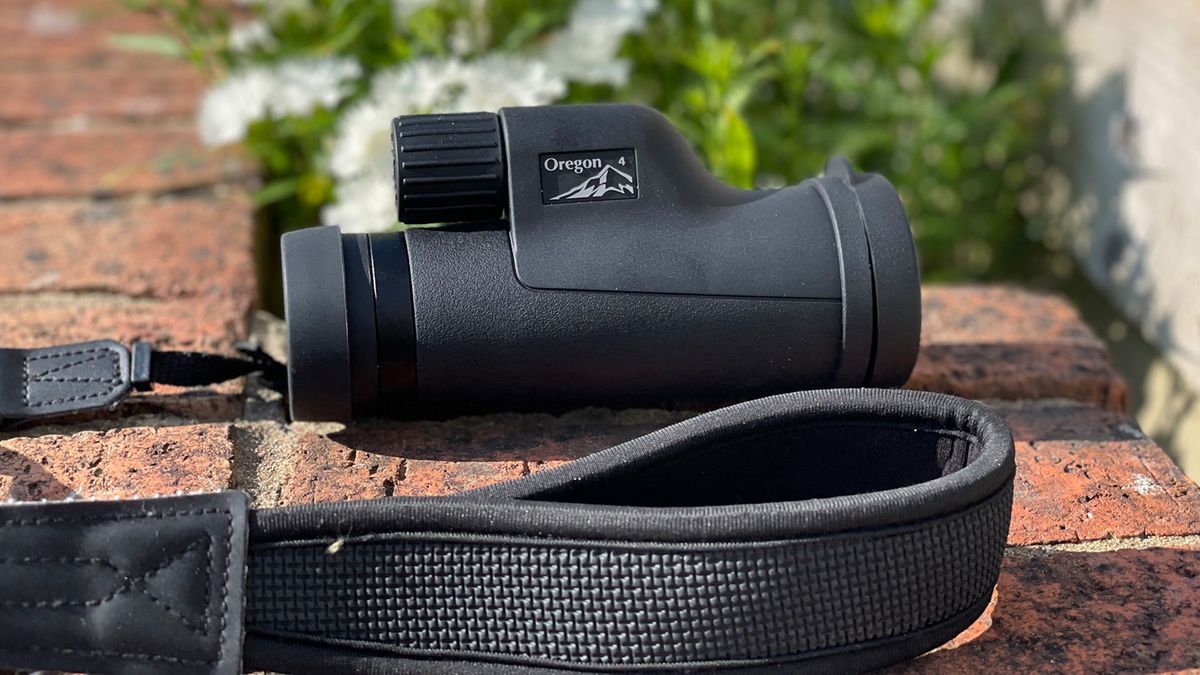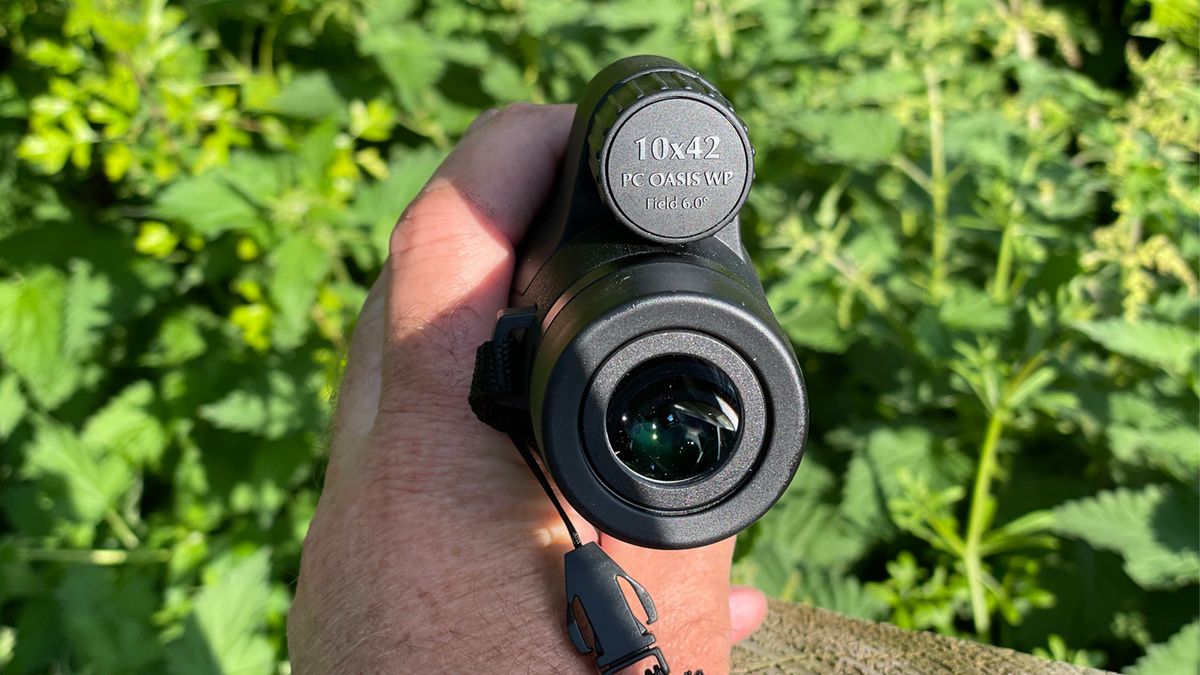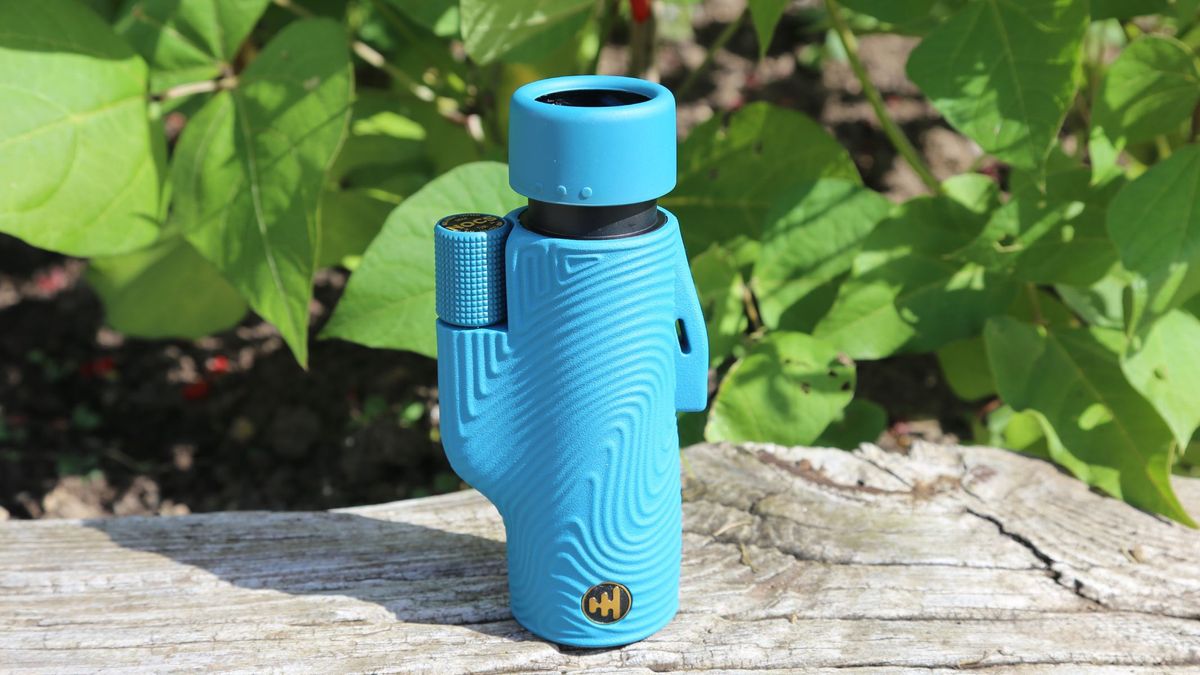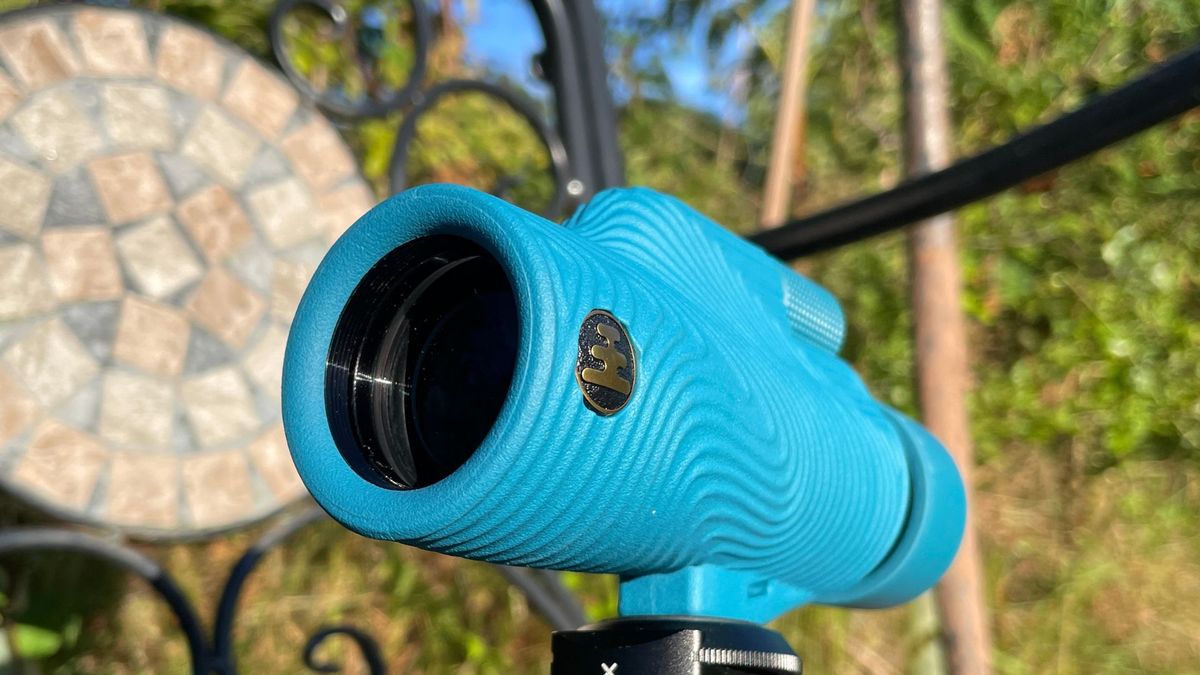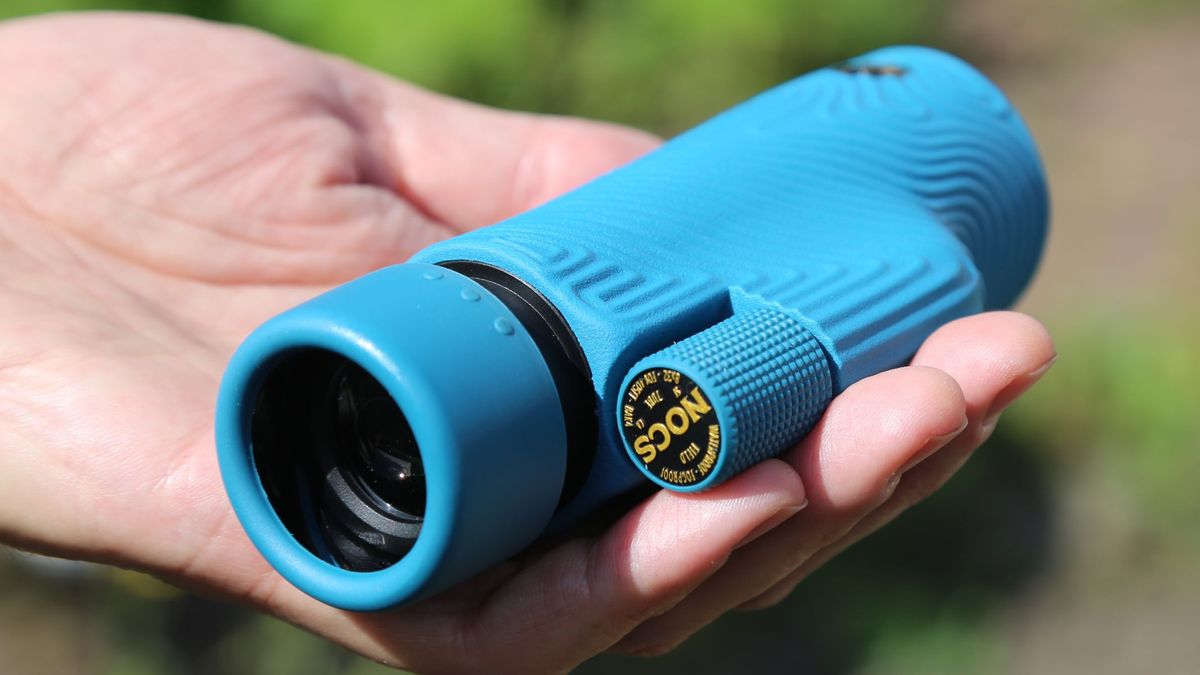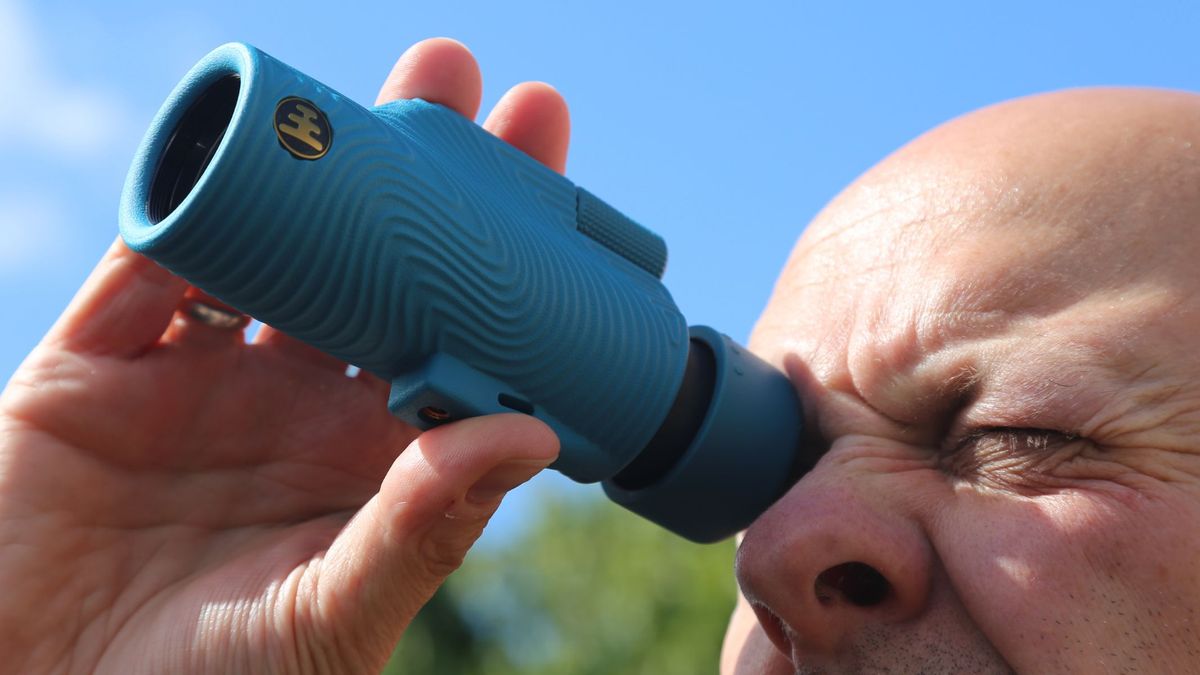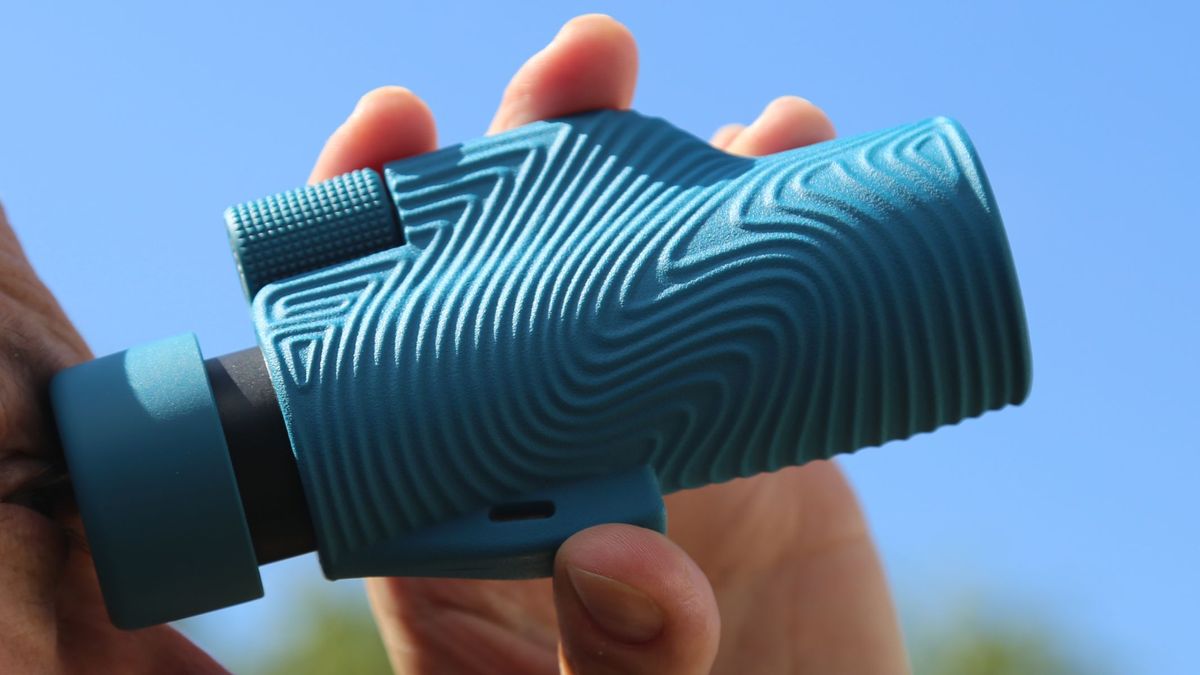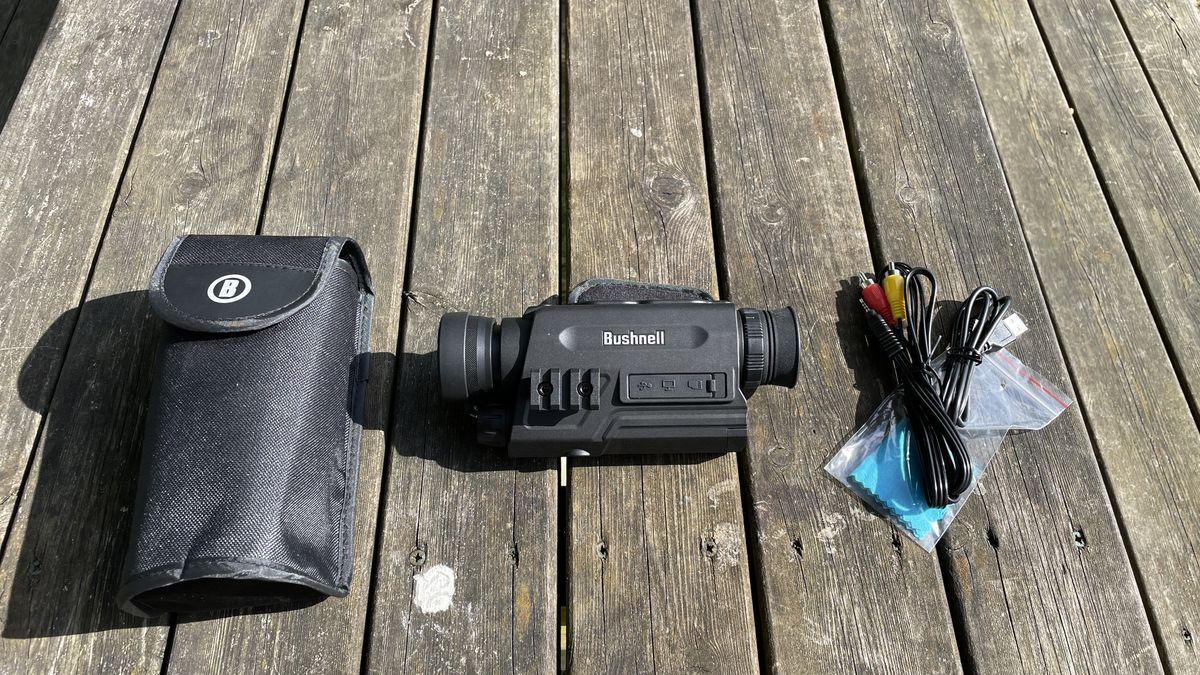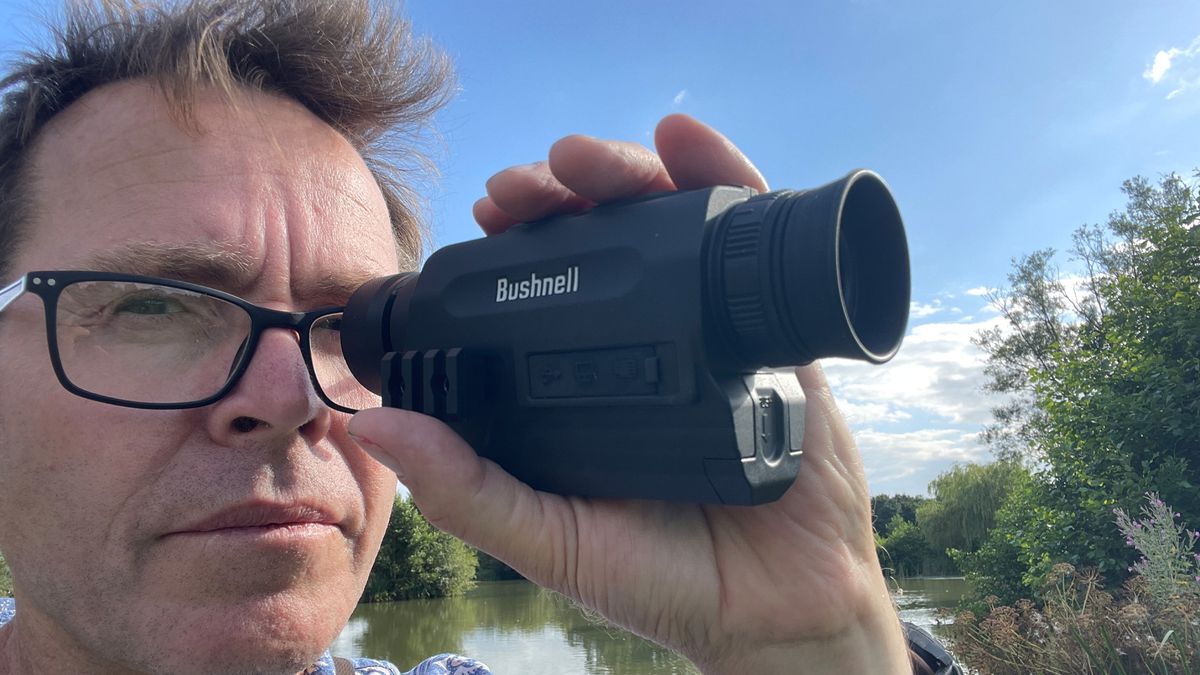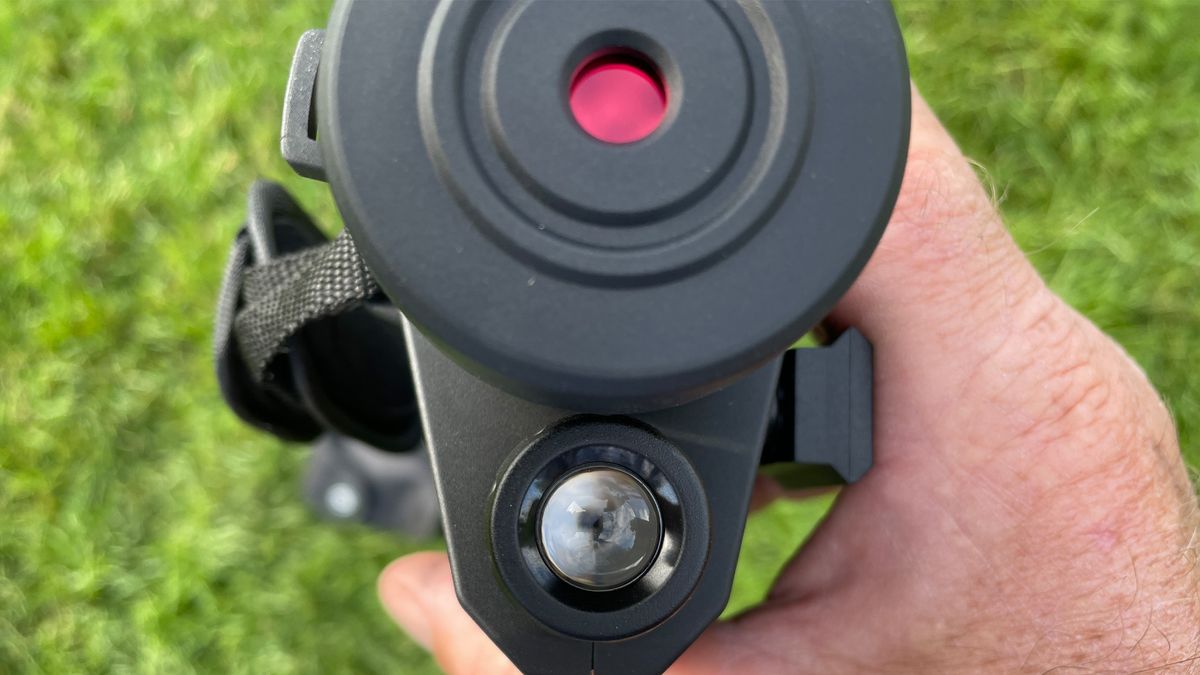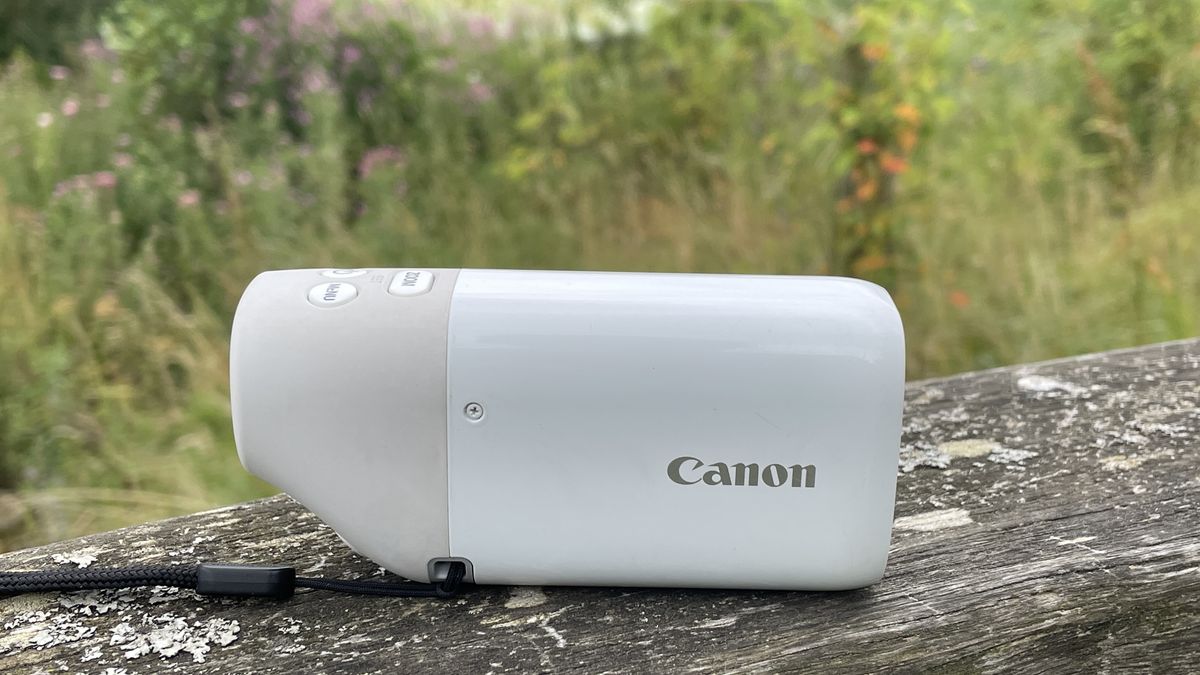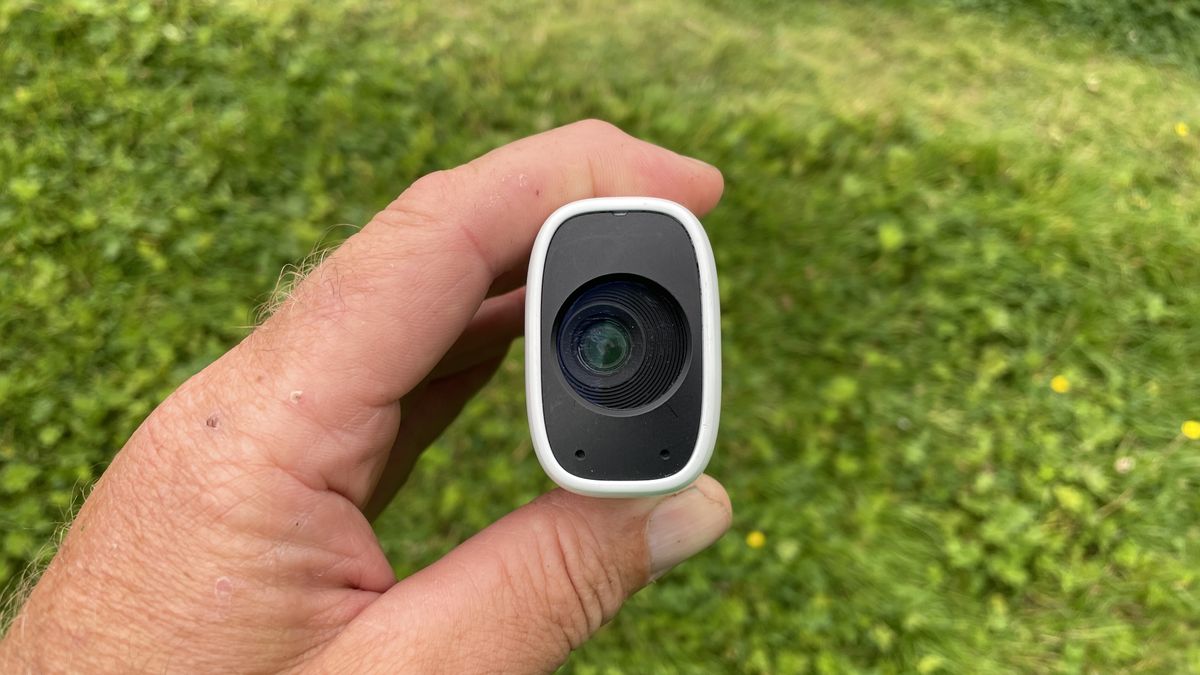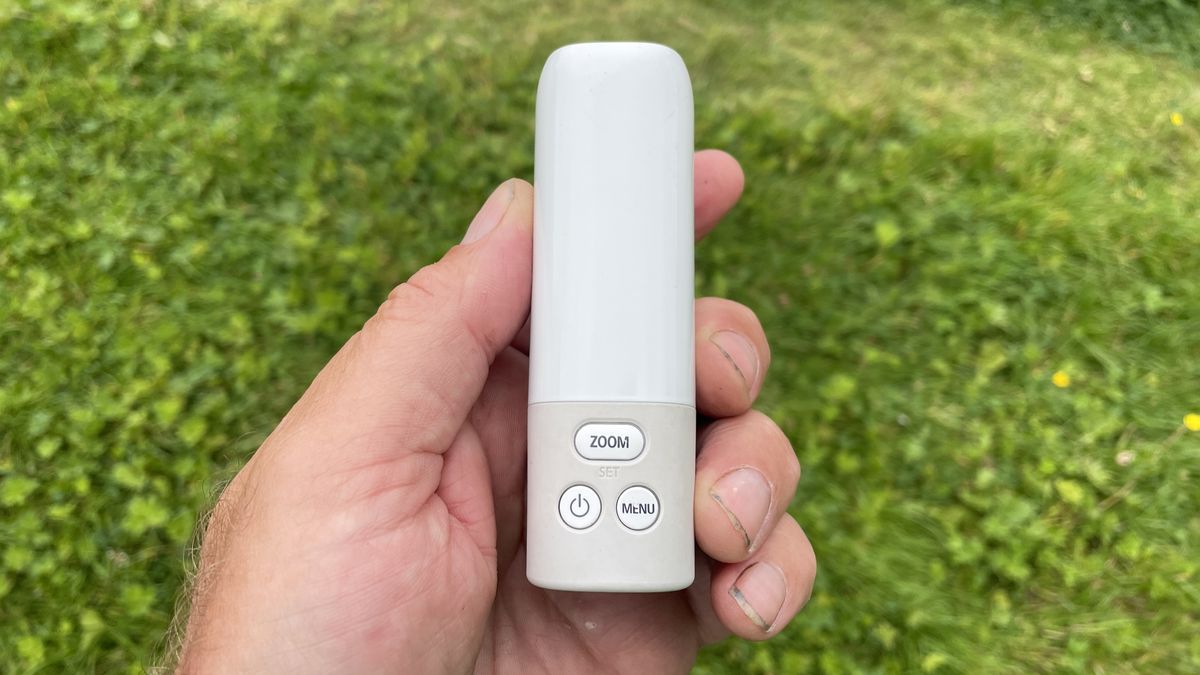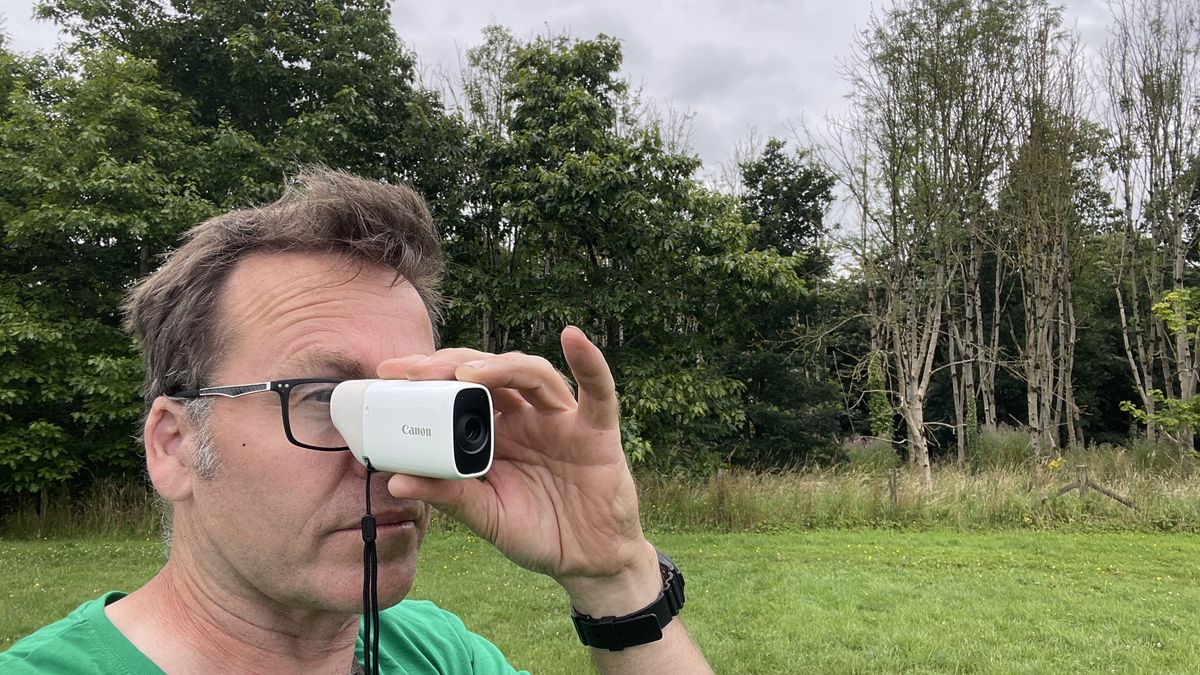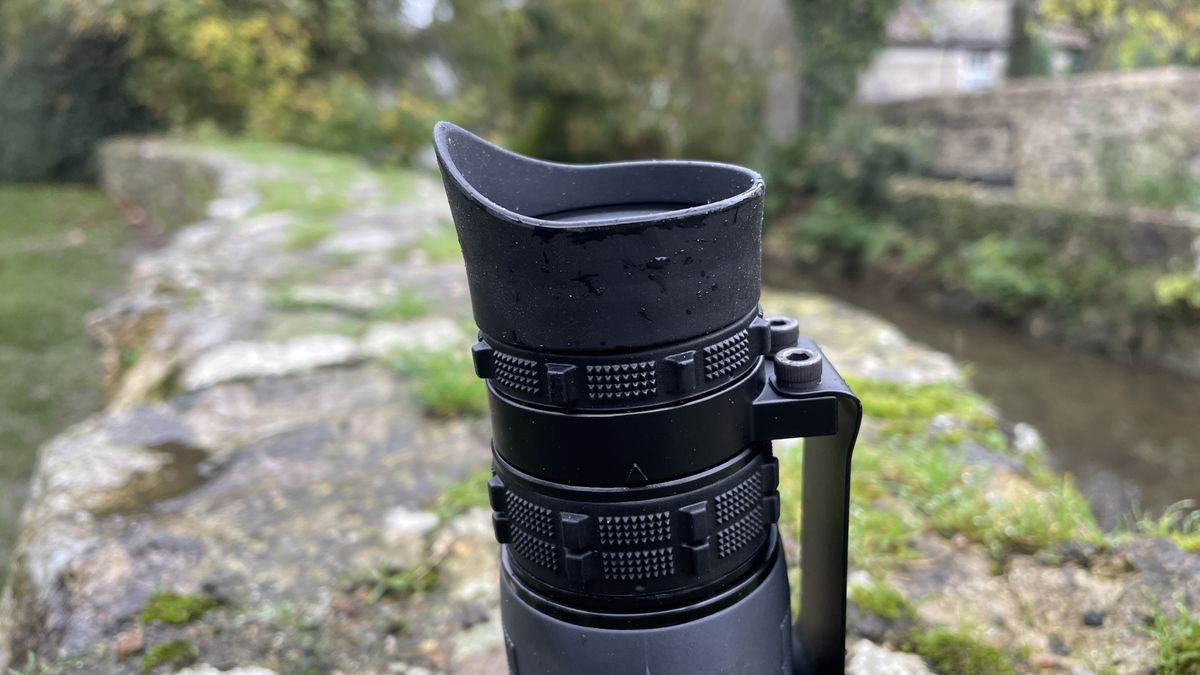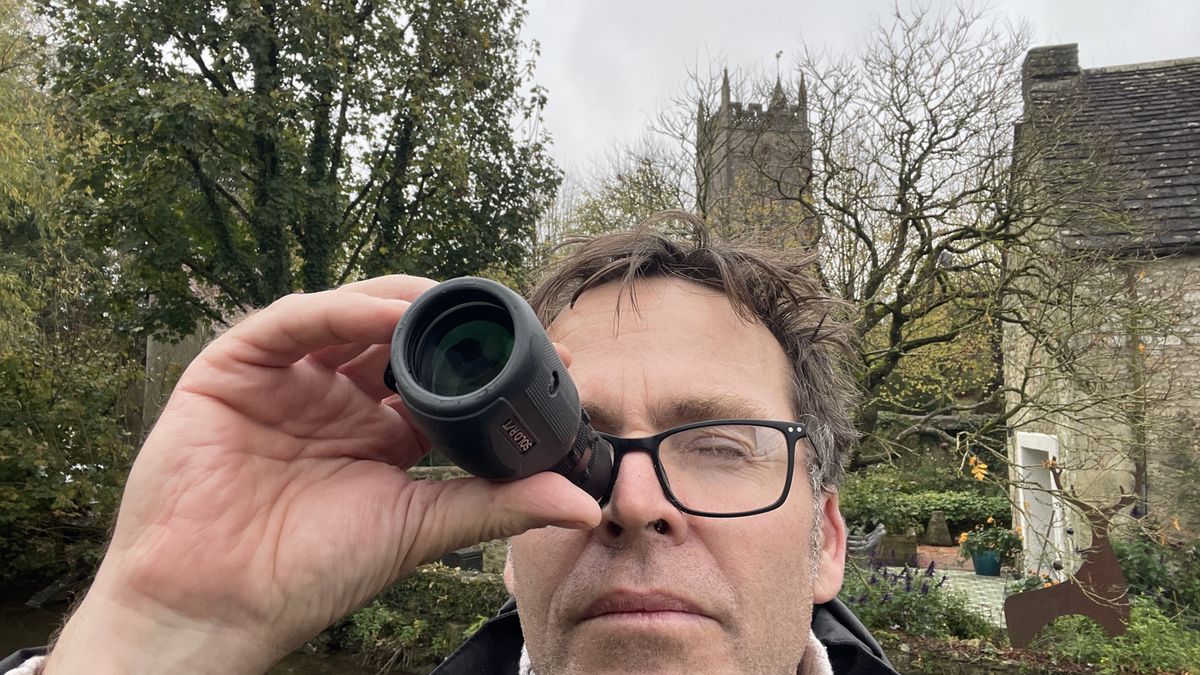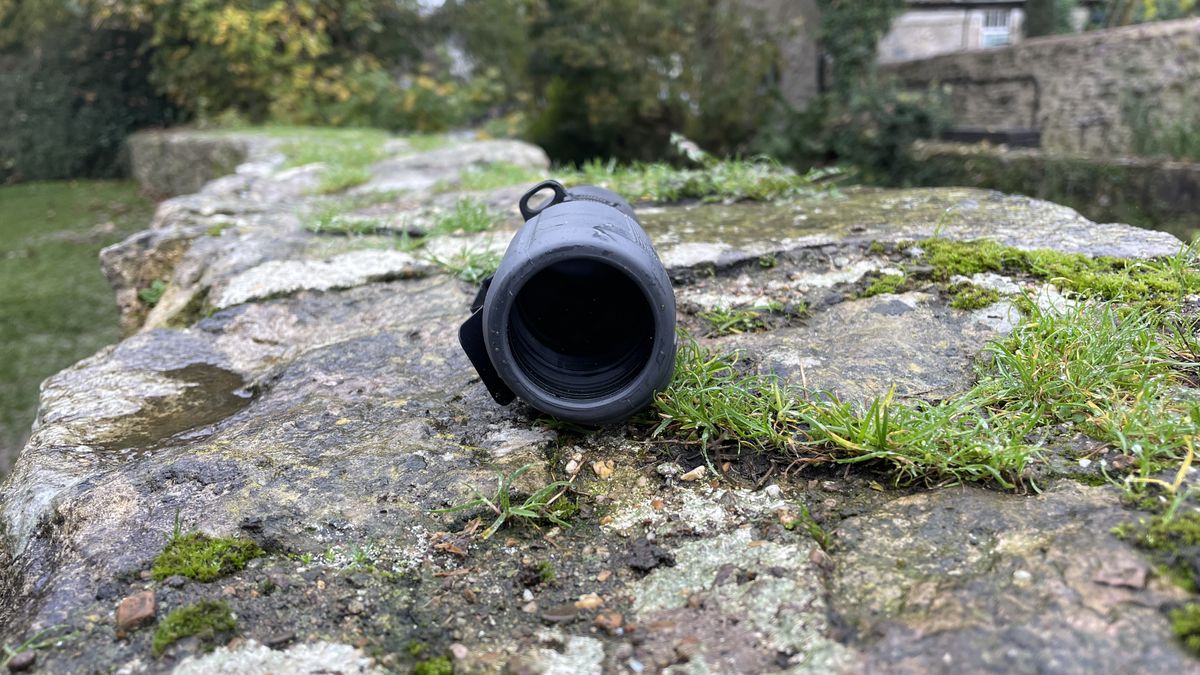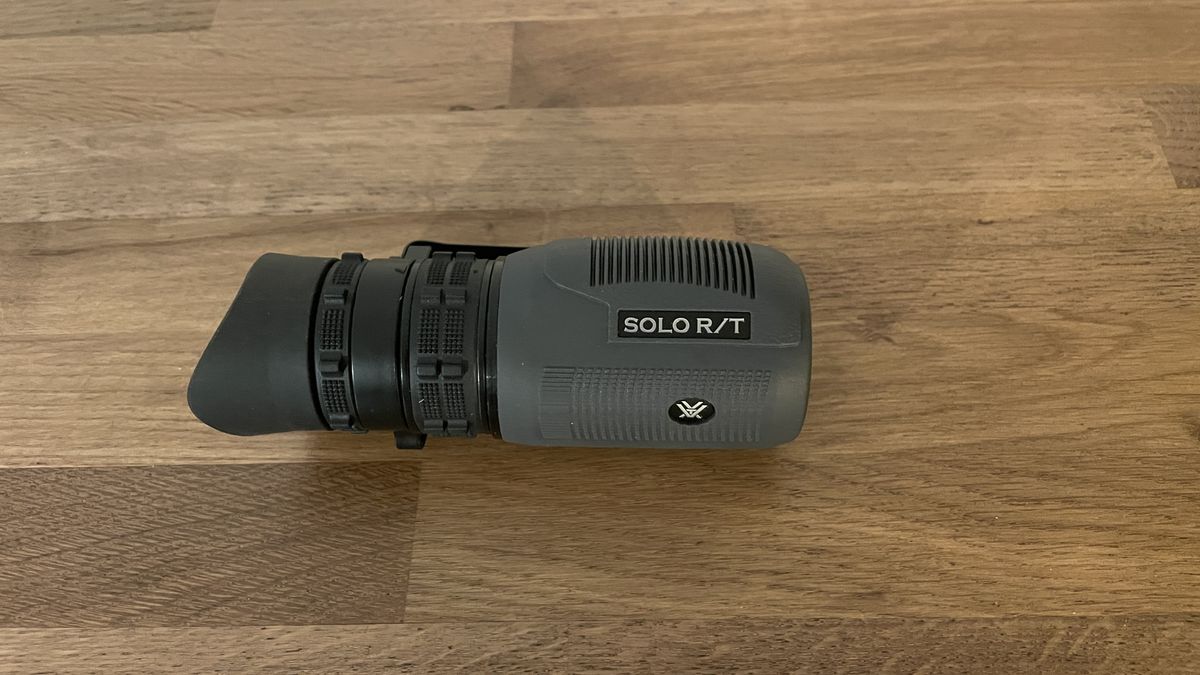The best monoculars offer several advantages over other stargazing, bird-watching and wildlife-spotting optics like the best telescopes or binoculars. Which is why you should consider them as your optics of choice for such an occasion.
Monoculars are incredibly user-friendly and highly portable. Small and lightweight, most are small enough to slip easily into your pocket, making them perfect for spontaneous observation. Some even lend themselves to skywatching and there’s plenty to see in the night sky.
Our expert reviewers have carefully selected, tested and rated a range of monoculars to suit all budgets and requirements to ensure we’re only recommending the very best models. Whether you’re looking for a budget monocular for the family or a more premium model for some stargazing, there should be something for you.
The quick list
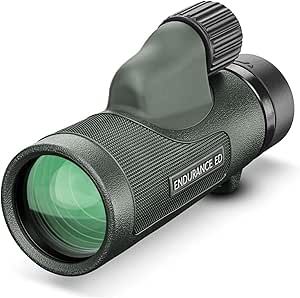 Best overall
Best overall
Best overall
Perfect for outdoor adventures, this lightweight, waterproof monocular is built to withstand the elements, offering reliable performance in any weather.
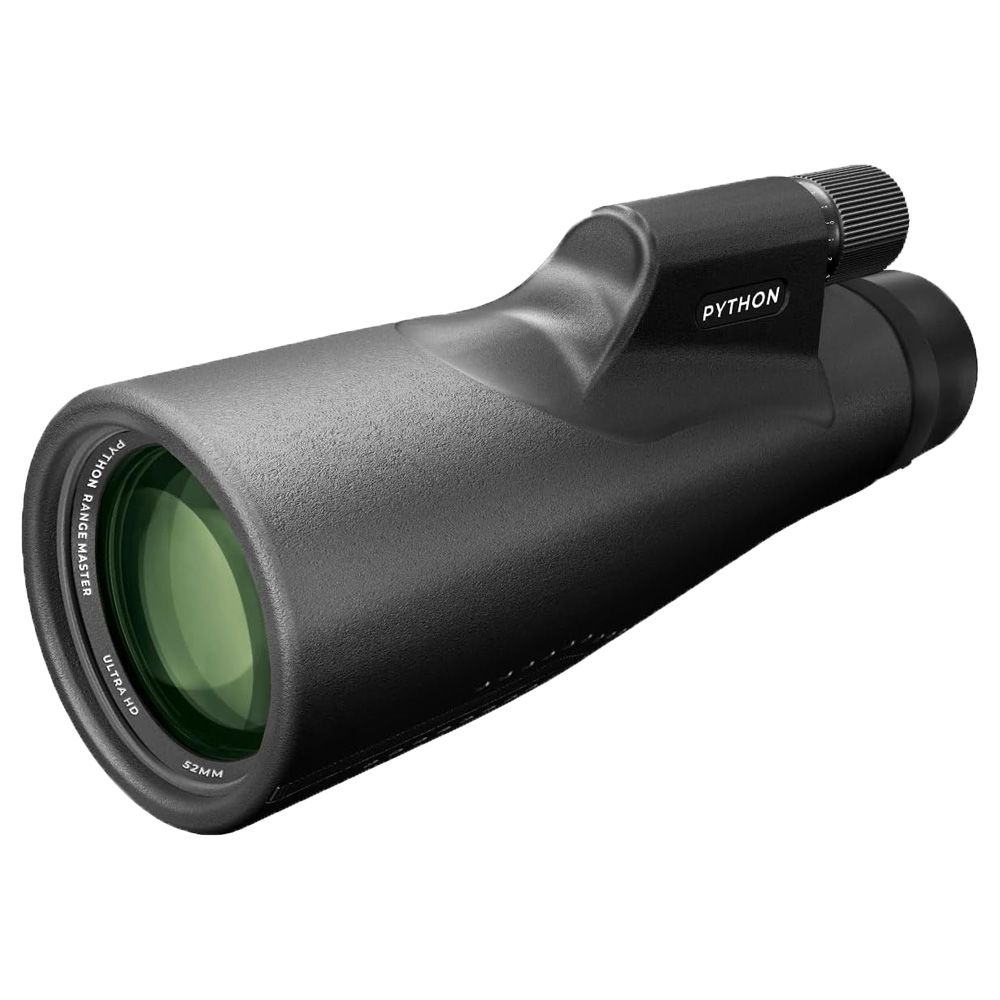 Best for tripod mounting
Best for tripod mounting
Python 12×52 Range Master Ultra HD
Best for tripod mounting
Boasting 12x magnification and 91% light transmission, this monocular delivers crisp, detailed views in both daylight and low-light conditions, but you’ll need a tripod.
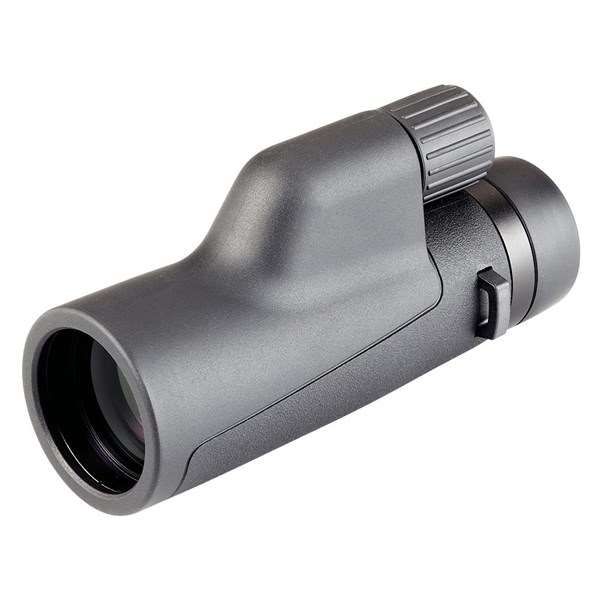 Best for one-handed use
Best for one-handed use
Opticron Oregon 4 PC Oasis 10X42
Best for one-handed use
Extremely easy to use even with one hand, and comes at a very reasonable price given its high performance.
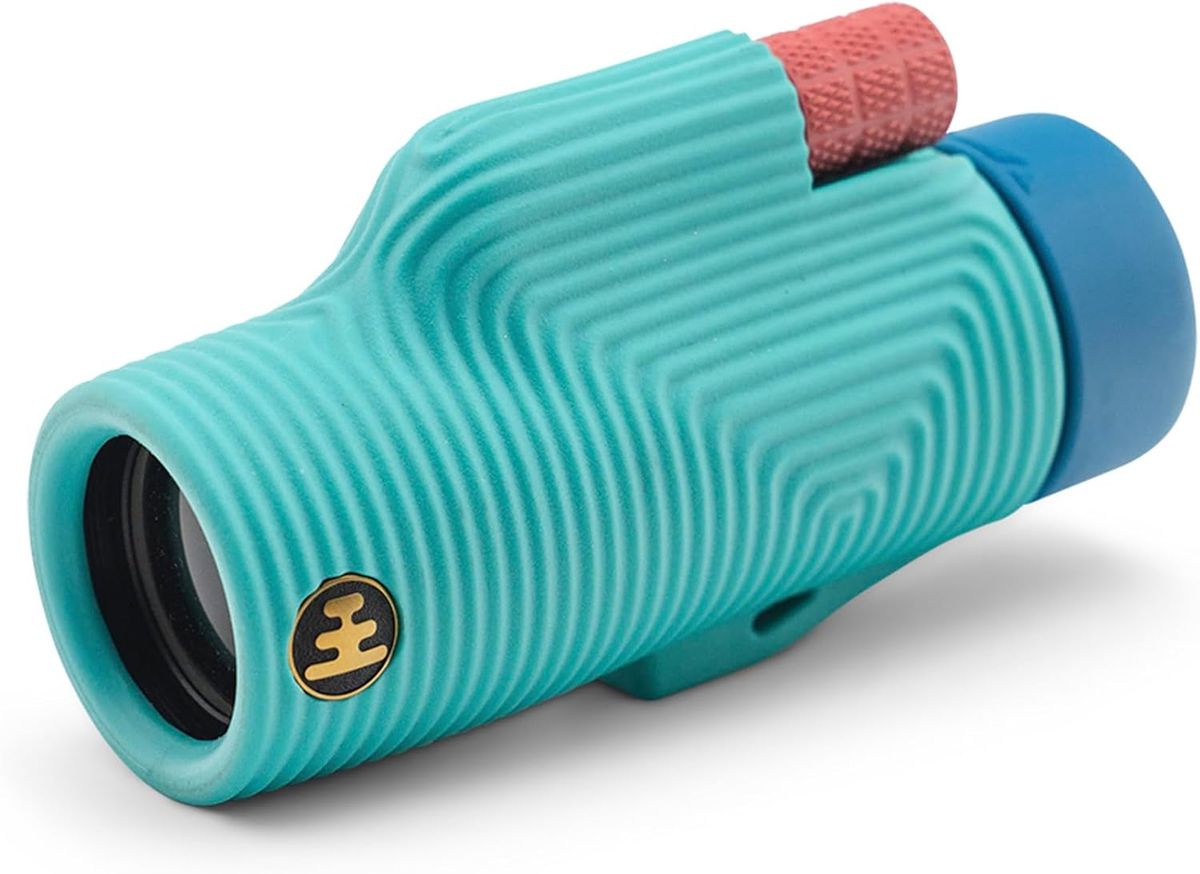 Best for travel
Best for travel
Best for travel
Don’t be put off by the colorful, plasticky aesthetic — this is a great little monocular that is lightweight and tough.
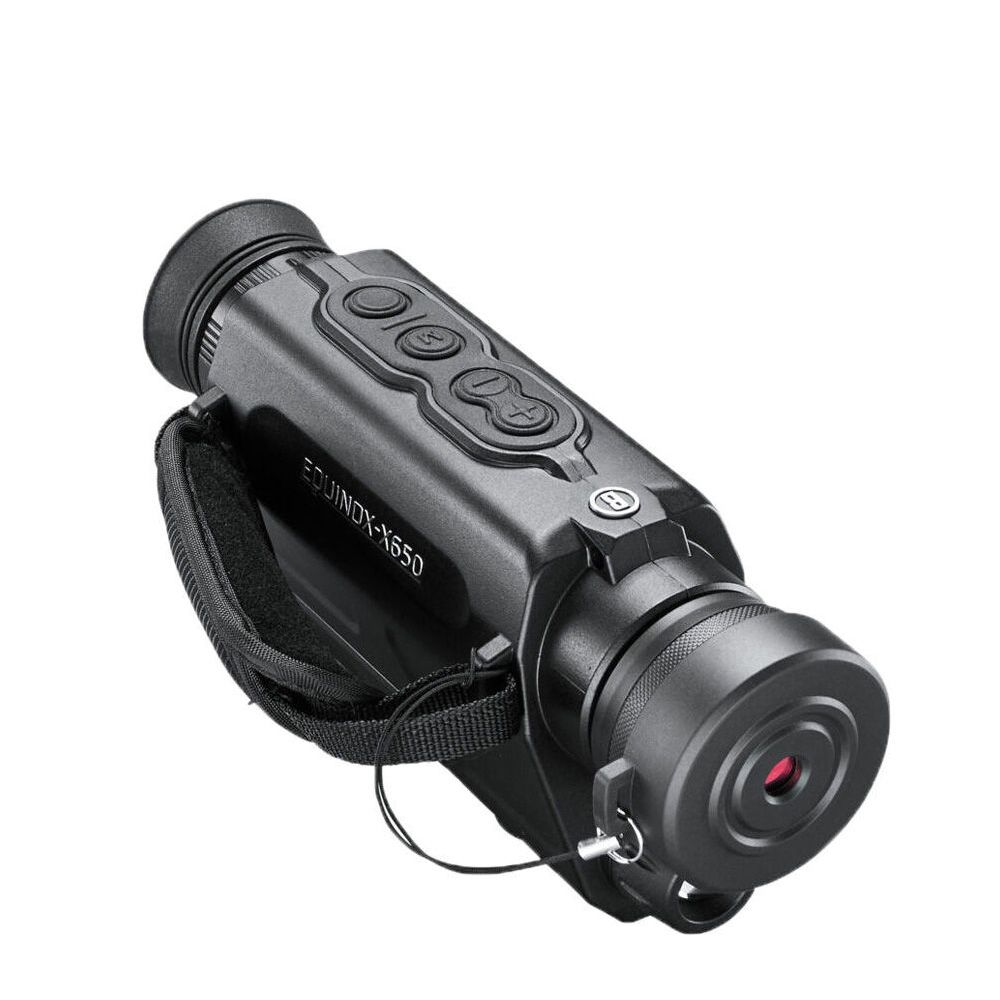 Best for night vision
Best for night vision
Bushnell Equinox X650 Night Vision 5×32
Best for night vision
A lightweight imaging monocular for use during the day and night to observe wildlife and the night sky above.
The best monoculars we recommend in 2025
Why you can trust Live Science
Our expert reviewers spend hours testing and comparing products and services so you can choose the best ones for you. Find out more about how we test.
Best monocular overall
Buy it if:
✅ You’re looking for a high-quality monocular without breaking the bank: It offers similar features and performance to more expensive alternatives.
✅ You want a good all-rounder: This model is lightweight, reliable and a good low-light performer, so it can be used for various purposes.
Don’t buy it if:
❌ You want pinpoint clarity: Other models (that are more expensive) will give better image clarity.
❌ You want something to fit in a small pocket: You might want to consider a smaller model with a less bulky focus ring.
The bottom line
🔎 Hawke Endurance ED 10×42: High-quality glass in a compact, lightweight design, ideal for on-the-go observing. It is built to endure inclement weather conditions and includes quality accessories. ★★★★
If you’re looking for a quality monocular with impressive features and performance but don’t want to spend a fortune, the Hawke Endurance ED 10×42 monocular could be the perfect match. It is water- and fog-proof for seamless transitions between temperature changes, and it’s rugged enough not to have to be too delicate — it is designed for use outdoors. We certainly put it through its paces in our full Hawke Endurance ED 10×42 review, praising its bright, clear images and impressive depth of field.
As well as its durable design, the optics are excellent and comparable with more premium models: BaK-4 roof prisms, fully multi-coated lenses and extra-low dispersion (ED) glass combine to provide clear and bright images with (to most users) negligible color distortion.
There are over 400 Amazon reviews to date, with the rating sitting at 4.4 out of 5 stars. Users raved about its clear image, lightweight design and close focus for backyard spotting. A couple of people mentioned the bulky focus wheel, which makes the monocular a little too large to fit in a small pocket, although a lanyard is supplied so you can carry it around your neck.
|
Attributes |
Notes |
|---|---|
|
Design |
Minimalist design that is grippy and rugged |
|
Performance |
Beautifully sharp and clear images with little color distortion. |
|
Functionality |
Waterproof and fog-proof, belt pouch and lanyard supplied. |
Best for tripod mounting
Buy it if:
✅ You’re looking for a high-quality monocular to use in the daytime and at night: The 91% light transfer makes this monocular a great skywatching companion.
✅ You want a monocular to use in all weathers: The Range Master is IPX7-rated and nitrogen-purged, so you can use it in all climes.
Don’t buy it if:
❌ You want to observe for long periods without tripod mounting: The 12x magnification is manageable for short periods, but you will require a very steady hand.
❌ You want premium build quality: Although the optics are stunning, we did experience some issues, such as the rubber film starting to lift away from the chassis, so we can’t comment on longevity.
The bottom line
🔎 Python 12×52 Range Master Ultra HD: Excellent glass from renowned German manufacturer Schott, combined with fully multi-coated lenses, makes the optics stunning, and it’s clear this is where Python has chosen to allocate its budget. ★★★★
This high-magnification monocular impresses optically. It features high-quality German Schott glass and fully broadband multi-coated lenses.
Due to the high magnification, it’s best to use this microscope with a tripod to avoid frustrating wobble. The greater the magnification, the higher the perceived wobble.
The magnesium body is coated with rubber to aid with grip, though on our review unit this did show signs that it was beginning to lift away from the chassis. Aside from that, however, the unit is rugged and reliable, and the IPX7 waterproof rating and nitrogen-purging make this suitable for use in all weathers.
If you do choose to use the monocular without a tripod, a hand strap that attaches to the side of the unit to aid with stabilizing the image is supplied. We found this helpful during our hands-on review of the Python 12×52 Range Master Ultra HD but did find ourselves resting on a ledge or fence to steady the image.
The focus wheel is well weighted and smooth to operate. Thanks to the wide viewing angle and the ease of use, we found that tracking flying birds was effortless.
Overall, it offers exceptional image quality, which is ultimately what you want from a relatively expensive monocular.
|
Attributes |
Notes |
|---|---|
|
Design |
The size and weight will best suit users with larger hands. |
|
Performance |
We can’t really fault the optics here. |
|
Functionality |
You ideally need a tripod for extended viewing, though the hand strap is useful. |
Best for indoor use
Buy it if:
✅ You’re after something to use indoors: This is where this particular model excels — looking at art, watching theatre and so on.
✅ You want something pocketable: The Nikon 5×15 HG is tiny, so it is highly portable no matter what you’re wearing.
Don’t buy it if:
❌ You want something for all-weather use: This model is not waterproof or nitrogen-purged (so it is not fog-proof).
❌ You need lots of magnification: The Nikon 5×15 HG monocular only has 5x magnification, which is low compared to other models.
The bottom line
🔎 Nikon 5×15 HG: A tiny monocular that is best used indoors or for casual use where you just want to get a bit closer to the action — not specifically for one task such as bird-watching. ★★★★
This pocketable monocular offers clear and sharp images with 5x magnification — enough to get a little closer to the action, and you certainly won’t need to use a tripod. Because of the low magnification, we wouldn’t recommend it for a specific purpose like bird-watching or wildlife spotting — it’s more of a handy companion to whip out when you need it. That said, its close focus of 24 inches (61 cm) makes it perfect to take to a museum or art gallery to see finer details in artifacts or paintings.
Although this is a fairly expensive model, the performance and quality of the product reflect the price tag. It may not have the highest magnification or rugged all-weather functionality, but we thought the image quality was seriously impressive when we got our hands on it for our Nikon 5×15 HG review. You will be rewarded with sharp, vibrant images even when conditions are difficult — in low light, for example.
The Nikon 5×15 HG weighs just 2.6 oz (75 g) so it can be used comfortably for long periods and forgotten about in a pocket when not in use. We took it to the theatre to watch a show and were seriously impressed by the quality and clarity of the image.
|
Attributes |
Notes |
|---|---|
|
Design |
A tiny, stylish and quality design for comfortable viewing. |
|
Performance |
The optics are seriously impressive and the build quality (although not weatherproof) is great. |
|
Functionality |
Great for close-focus situations |
Best for one-handed use
Buy it if
✅ You want something that’s easy to use: One-handed operation is possible and simple
✅ You want good value for money: This is a fairly priced product that provides good-quality views
Don’t buy it if:
❌ You want the best accessories: We found the neck strap to be on the small side.
❌ You’re looking for top-flight performance: As with most products, you’ll have to fork out a little more cash if you want the very best.
The bottom line
🔎 Opticron Oregon 4 PC Oasis 10×42: A good all-rounder that copes well in low light. It is pretty rugged and very easy to use, even when wearing gloves. ★★★★
This roof prism design monocular, as we found in our hands-on Opticron Oregon 4 Oasis 10×42 review, is a good all-round performer. It is reasonably priced and is rugged enough to cope in most environments. It is protected with nonslip rubber armor, so it can handle the odd knock and accidental drop, too — something you may find useful if you’re sharing with children (or clumsy friends!).
We especially liked how easy it is to use one-handed, even when wearing gloves. It utilizes BaK-4 fully-coated glass that gives excellent clarity and also works well in low-light conditions. We had no trouble getting closer to the details in churches, for example, and encountered no problems when using it at twilight.
It is waterproof and nitrogen-purged, so it can be used in all weathers, and there is no need to wait for the lenses to de-fog when moving between different temperatures.
10x magnification is a comfortable amount for most users to manage wobble-wise, but it’s important to note that there is no monopod/tripod mount, so you don’t have this option. Instead, you’ll have to rely on leaning against something, such as shelves in hides, for long observing sessions.
|
Attributes |
Notes |
|---|---|
|
Design |
Roof prism design with BaK-4 fully coated optics. |
|
Performance |
Excellent light-gathering abilities and pleasing optics. |
|
Functionality |
Very simple operation and comes with a neck strap and chest pouch. |
Best for travel
Buy it if:
✅ You want something to use in all weather conditions: It has an IPX7 waterproof rating and is fogproof.
✅ You might want to use it with a tripod: Thanks to a 1/4-inch thread on the bottom, the option is there.
Don’t buy it if:
❌ You’re prone to losing accessories: The lens cap and eyecup shield don’t have attachments.
❌ You want an instrument for low light: The small 32 mm aperture doesn’t lend itself well to low light work — this is a daytime monocular.
The bottom line
🔎 Nocs Field Tube 8×32: Another good all-rounder protected with ribbed, rugged casing. The oversized focus wheel makes one-handed operation easy, although it doesn’t perform well once the sun starts to go down. ★★★★
Don’t let the brightly colored casing deter you — this is a serious travel-friendly monocular. Though some might not like the plasticky aesthetic, it actually helps to keep the unit lightweight and adds to the hardwearing design of this monocular.
The lenses are multi-coated and scratch-resistant, which is reassuring given that the lens caps are quite easy to lose because they aren’t attached.
Due to the relatively small 32 mm objective lens, this isn’t a monocular that likes to be used after sunset; for that, you’d want something with a minimum of a 42 mm objective lens.
If you’re planning on long bird-watching or wildlife-spotting sessions, you might find the 1/4-inch thread handy, though, for regular casual use, the smaller 8x magnification shouldn’t cause any issues with image wobble.
We were impressed with how easy it was to focus during our hands-on Nocs Field Tube 8×32 review, thanks to the oversized focusing wheel. This is easy to operate with gloves on, or if you have cold or wet hands.
No neck strap or protective carry case are provided, but given the rugged build and scratch-proof credentials, we didn’t mind too much.
|
Attributes |
Notes |
|---|---|
|
Design |
Small but hard-wearing. |
|
Performance |
Easy to hold steady. |
|
Functionality |
Smooth focus wheel. |
Best for night vision
Buy it if:
✅ You want something for daytime and nighttime: You can use this monocular to observe nighttime wildlife activity, but don’t expect to take high-quality photos.
✅ You want to use it for occasional star gazing: The focus range and light handling are more than sufficient for this purpose.
Don’t buy it if:
❌ You want something that feels high quality: The overall feel and construction of the unit are lacking.
❌ You want excellent image quality: We struggled to obtain usable imagery from the camera.
The bottom line
🔎 Bushnell Equinox X650 Night Vision 5×32: This affordable, entry-level monocular provides an opportunity to experience night vision technology without breaking the bank, but don’t expect miracles. ★★★ ½
The Bushnell Equinox X650 Night Vision 5×32 monocular is an entry-level device offering night vision capabilities at an affordable price point. It has a 32 mm objective lens and a built-in infrared (IR) illuminator, providing a night viewing distance of up to 650 feet (198 m). The monocular can capture photo and video content onto a MicroSD card, but we thought the quality of the images was lackluster.
During our hands-on Equinox X650 review, we found that the unit delivered basic functionality suitable for general identification purposes, but image quality was subpar, with daytime photos often appearing blurred and nighttime images lacking clarity, making them unworthwhile. The device also struggled with bright lights at night, causing it to switch between day and night modes unpredictably.
Overall, the Bushnell Equinox X650 is a lightweight and cost-effective introduction to night vision technology, but its performance limitations, particularly regarding image quality, may not satisfy users who want a more premium unit. We thought it delivered a satisfactory performance overall, but it doesn’t excel in any particular area.
|
Attributes |
Notes |
|---|---|
|
Design |
Can be fixed to a tripod or rifle but the design is a little flimsy. |
|
Performance |
Fine for identification and wildlife observation but image clarity is lacking. |
|
Functionality |
Night vision mode for users who want to monitor wildlife after sunset. |
Best digital sensor
Buy it if:
✅ Images are everything: Boasting both still and video capture, this is a great monocular for imaging (not all monoculars store photos).
✅ You’re a twitcher: This compact unit is great for identifying birds (and other wildlife) from a distance.
Don’t buy it if:
❌ You want to use a tripod: The Powershot Zoom has no attachment for one, so this is for handheld use only.
❌ You’ve got large hands: The buttons are packed tightly together, so you must often reposition the unit to access all of the controls.
The bottom line
🔎 Canon Powershot Zoom Digital Monocular: This is a budget-friendly, entry-level digital monocular that is particularly useful for watching sports, bird-watching and sightseeing. ★★★ ½
The Canon PowerShot Zoom Digital Monocular is a compact, lightweight device that combines monocular functionality with digital imaging.
It offers optical zoom at 100 mm and 400 mm, with a digital enhancement reaching 800 mm. Its compact size and light weight make it highly portable and pocketable, weighing just over 5 oz (145 g) and measuring just over four inches (103 mm) in length. However, be warned — the plastic casing lacks waterproofing, limiting its durability in inclement weather. There are also no covers for either the objective lens or the viewfinder.
It can capture 12.1 MP photos and record videos in full HD, storing content on a MicroSD card. Connectivity options include Bluetooth and wireless pairing with smartphones via Canon’s Camera Connect app, facilitating remote viewing and fast image transfer.
In our hands-on Canon PowerShot Zoom Digital Monocular review, we found that image quality diminishes when using the 800 mm digital zoom, and the closely spaced controls may hinder usability, especially if you have larger hands. It does, however, have image stabilization, which is a plus. We found bird-watching to be an incredibly rewarding experience when using the Canon.
We found the face detection and tracking autofocus modes worked well under good lighting, but they’ll struggle in low light, so it’s best used during the day.
|
Attributes |
Notes |
|---|---|
|
Design |
Pocketable and portable but no waterproofing |
|
Performance |
Rewarding for bird-watching with photos that can actually be used |
|
Functionality |
Bluetooth-enabled for remote viewing and simple image transfer |
Best for beginners
Buy it if:
✅ You’re a hiker: The lightweight design means it is easily portable and comfortable to wear around the next for extended periods.
✅ You want bright, high-contrast images: The multi-coated BaK4 glass produces beautifully clear images.
Don’t buy it if:
❌ You want an extended focus range: The focus range is quite limited, with only a quarter-turn from close focus to infinity. This makes fine focusing difficult.
The bottom line
🔎 Vortex Solo R/T 8×36 monocular: A capable performer with a lightweight, tough design. Image clarity is good, as are its low-light capabilities. We hope the stiffness of the focus wheel improves over time. ★★★
The Vortex Solo R/T 8×36 Monocular is a compact, durable optical device designed for outdoor enthusiasts. It features a rugged, waterproof rubber armor exterior, so it is suitable for all weather conditions. The 36 mm objective lens, combined with BaK-4 prisms and multi-coated optics, ensures excellent light transmission, delivering clear and bright images even in low-light conditions; we were pleasantly surprised in our Vortex Solo R/T 8×36 monocular review.
With an 8x magnification, the monocular offers a substantial 393-foot field of view at 1,000 yards, facilitating easy tracking of moving subjects. The built-in MRAD-based ranging reticle is particularly beneficial for precise distance estimation, enhancing its utility for activities like target shooting.
We did find that the focus mechanism is notably stiff, requiring users to adjust focus away from the eye, which impedes quick viewing.
Overall, the Vortex Solo R/T 8×36 Monocular is a well-built, versatile tool, offering high-quality optics and practical features for a variety of outdoor applications. We can only hope the focus wheel will loosen over time.
|
Attributes |
Notes |
|---|---|
|
Design |
Tough and sturdy waterproof construction |
|
Performance |
Very clear views and good low-light performance |
|
Functionality |
Close focus for backyard wildlife spotting |
Best monoculars: Comparison
|
Name |
Magnification |
Objective lens diameter |
Field of view |
Eye relief |
Close focusing distance |
Environmental protection |
Weight |
Dimensions |
|
Hawke Endurance ED 10×42 |
10x |
42 mm |
5.8 degrees |
13 mm |
6.6 ft / 2.01 m |
Waterproof: yes Fogproof: yes |
11.5 oz (326 g) |
5.6 x 3.1 in (14.3 x 8 cm) |
|
Python 12×52 Range Master Ultra HD |
12x |
52 mm |
274 at 1000ft (angle not specified) |
Not specified |
11.5 ft / 3.5 m |
Waterproof: yes Fogproof: yes |
20.4 oz (579 g) |
8.1 x 3.5 x 2.6 in (20.5 x 8.9 x 6.6 cm) |
|
Nikon 5x 15 HG |
5x |
15 mm |
9 degrees |
15.8 mm |
24-inch / 61 cm |
Waterproof: yes Fogproof: no |
2.6 oz /(75 g) |
2.8 x 1.2 x 1.2 in (7.1 x 3 x 3 cm) |
|
Opticron Oregon 4 PC Oasis 10×42 |
10x |
42 mm |
3.3 degrees |
14 mm |
3.3 ft / 1 m |
Waterproof: yes Fogproof: yes |
10.5 oz (197 g) |
6.9 x 12.6 in (17.5 x 32 cm) |
|
Nocs Field Tube 8×32 |
8x |
32 mm |
7.7 degrees / 405 ft at 1,000 yds |
15 mm |
7.4 ft / 2.2 m |
Waterproof: yes Fogproof: yes |
8.09 oz (229.4 g) |
1.77 x 5.03 in (4.5 x 12.8 cm) |
|
Bushnell Equinox X650 night vision 5×32 |
5x |
32 mm |
Not specified |
22 mm |
Not specified |
Waterproof: no Fogproof: no |
13.8 oz (391 g) |
1.77 x 5.03 in (4.5 x 12.8 cm) |
|
Canon Powershot Zoom |
400mm with 2x digital zoom |
N/A |
24.5 / 6.2 / 3.1 degrees (at 100/400/800 m) |
22 mm |
W: 1m / T: 4.5 m |
Waterproof: no Fogproof: no |
5.11 oz (145 g) |
1.32 x 2 x 4.06 in (3.3 x 5.1 x 10.3 cm) |
|
Vortex Solo R/T 8×36 |
8x |
32 mm |
7.5 degrees / 393 ft (131.4 m) at 1,000 yds |
18 mm |
16 ft / 4.88 m |
Waterproof: yes Fogproof: yes |
10.7 oz (303 g) |
5.6 x 2.2 x 2.2 in (14.3 x 5.3 x 5.3 cm) |
Contributing experts

Matt Morris is a keen astronomer, wildlife watcher and photographer living in Somerset, UK. He started stargazing and bird-watching at the age of 10 with his father, who took him to bird hides and nature reserves around England. This sparked his interest in cameras and optics, a passion that has now spanned the better part of four decades and led to his being featured in several national photography magazines for competition-winning photos. Matt has had deteriorating eyesight in one eye over the last few years due to being Type-1 diabetic. This has led him to develop a special interest in monoculars and spotting scopes as these are now the only means by which Matt’s passion for bird-watching and wildlife spotting can continue. His eyesight is in a state of flux as diabetes takes its toll, further emphasizing the importance for him to find and use quality optical equipment — although Matt is happy to point out his right eye is in perfect working order!
Frequently Asked Questions
What do the numbers mean when buying a monocular?
The numbers in a monocular are the same as a pair of binoculars. The first number is the magnification strength, and the second number is the diameter of the objective lens. So, a 10×42 monocular will have a magnification of 10x and an objective lens diameter of 42 mm.
The higher the magnification, the further the monocular can see, and the wider the objective lens, the more light it lets in.
How do I choose a monocular?
We asked our contributing expert Matt Morris, who told us:
“The ideal way to choose a monocular is to decide where and when and how you’ll be using your monocular. Will you use it for bird-watching, sports viewing or astronomy? These will all determine which monocular is best for you.”
Once you’ve determined what you’ll be using your monocular for, you can then narrow down your search. For example, bird-watchers will want something lightweight and waterproof, whereas stargazers will need something that is better in low light and fog-proof.
Are monoculars better than binoculars?
Monoculars aren’t necessarily better than the best binoculars, but they are usually smaller and more lightweight as they are essentially just a single side of a binocular. Some users prefer using binocular vision, others prefer the convenience of a smaller optic. It’s a personal preference!
What size monocular is best for bird-watching?
We asked our expert Matt Morris, who said:
“Any monocular of a size which enables it to be quickly and conveniently carried and then put to use in the field. Around 8–10x magnification is perfect. Any higher and you may have trouble holding the optic steady.”
What magnification is best for stargazing?
Stargazing is a little different from terrestrial viewing and bird-watching. As the stars are further away, you need a higher magnification (and a higher objective lens diameter) in order to get the best view. Monoculars don’t tend to have the reach of the best binoculars for stargazing, but you can certainly get a decent view with a monocular.
Matt Morris told us:
“Most monoculars have between 8 and 12x magnification due to their compact size. This is easily enough to allow views of nearby stars.”
How much does a monocular cost?
There are monoculars as low as $75, but we’ve found the minimum entry point for a capable optic is around $100.
How far can you see with a monocular?
Ultimately it depends on the magnification, but you’ll be able to see objects up to 1,000 yards away with an 8x or 10x monocular.
Can I see planets with a monocular?
You’ll be able to see a brighter view of the planets than you can with the naked eye, but you won’t be able to get detailed views — for that, you’ll need one of the best telescopes. For your best chance of spotting some planets, go for a higher magnification or use a pair of the best binoculars for stargazing.
Do I need a waterproof monocular?
We asked our monocular expert Matt Morris, who said:
“Although it’s not strictly necessary to have a waterproof model, the very nature of the monocular being waterproof means that you can use it in the field and damp misty conditions won’t affect performance. The waterproofing tends to include beefier armor and body protection, further increasing the usability of the optic.”
Furthermore, if you’re using your monocular for stargazing, it’s more important for your optic to be fog-proof rather than waterproof.
How we tested the best monoculars
To ensure that each monocular gets a proper hands-on review, they are taken out and used as they would be in “real life”. They are taken to different environments, such as bird hides and on nature walks in various weather conditions, and also tested indoors — for example, for getting a closer look at artifacts in museums and churches.
They are tried with and without spectacles and used for extensive observing sessions to test their comfort with prolonged use. We also examine the quality of any accessories, such as shoulder straps, lens caps and belt pouches.
We then score each monocular on its design, performance and functionality, ultimately giving them an overall rating of five stars.

